- International edition
- Australia edition
- Europe edition
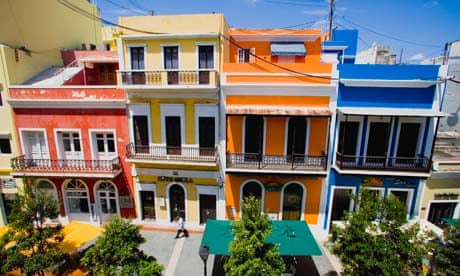

Tips for travel writing
Write in the first person, past tense (or present if the action really justifies it), and make your story a personal account, interwoven with facts, description and observation.
Many writers start their piece with a strong – but brief – anecdote that introduces the general feeling, tone and point of the trip and story. Something that grabs the reader's attention and makes them want to read on. Don't start with the journey to the airport – start with something interesting, not what happened first.
Early on you need to get across the point of the story and trip – where you were, what were you doing there and why. If there is a hook – a new trend, discovery or angle – make that clear within the first few paragraphs.
Try to come up with a narrative thread that will run throughout the piece, linking the beginning and end; a point you are making. The piece should flow, but don't tell the entire trip chronologically, cherry pick the best bits, anecdotes and descriptions, that will tell the story for you.
Quotes from people you met can bring the piece to life, give the locals a voice and make a point it would take longer to explain yourself. Quote people accurately and identify them, who are they, where did you meet them?
Avoid cliches. Try to come up with original descriptions that mean something. Our pet hates include: "bustling markets"... "azure/cobalt sea"... "nestling among" ... "hearty fare" ... "a smorgasbord of...".
Don't use phrases and words you wouldn't use in speech (such as "eateries" or "abodes"), and don't try to be too clever or formal; the best writing sounds natural and has personality. It should sound like you. Don't try to be "gonzo" or really hilarious, unless you're sure it's working.
Check your facts! It's good to work in some interesting nuggets of information, perhaps things you've learned from talking to people, or in books or other research, but use reliable sources and double-check they are correct.
Write economically – don't waste words on sentences that could be condensed. Eg say "there was a..." not "it became apparent to me that in fact there existed a...".
Moments that affected you personally don't necessarily make interesting reading. Avoid tales of personal mishaps – missed buses, diarrhoea, rain – unless pertinent to the story. Focus on telling the reader something about the place, about an experience that they might have too if they were to repeat the trip.
Five more tips from Guardian travel writers
Author Giles Foden says he always feels travel writing benefits from a cinematic approach, in that you need to vary the focus – wide lens for setting and landscape; medium lens for context and colour; zoom lens for detail and narrative – and switch between the views in a piece. It may sound a bit precious, but it's a very handy tip for varying the pace of an article. Andy Pietrasik, head of Guardian Travel
Travel journalism should add to the wealth of information already out there in guidebooks and on websites, so try to seek out the more off-the-beaten-track places to eat, drink, visit – often the places locals might frequent. Revealing a new or different side to a destination will give your story a richness that you won't get with a description of a visit to the tourist cafe in the main square. Isabel Choat, online travel editor
What sets good travel writing apart is detail, detail, detail. Which cafe, on what street, overlooking what view? You must sweep the reader up and carry them off on the journey with you. Paint an evocation of where you are so we can experience it along with you. Be specific and drop "stunning", "breathtaking" and "fantastic" from your lexicon, otherwise it's just a TripAdvisor entry. Sally Shalam , Guardian hotel critic
An important rule of creative travel writing is to show, not tell, wherever possible. Readers want to feel as if they're eavesdropping on a conversation, or being shown something secret and magical. People don't like being told what to think. If a child wearing rags made you sad, for example, describe the child, their clothes, the way they carried themselves. Assume readers are sentient. If you write it well, they will "feel" what effect the encounter had on you. This is much more powerful than saying, "I felt sad." Mike Carter, Guardian contributor and author of One Man and his Bike
My golden rule when writing a piece is to include as much visual description as possible. It's easy to presume a lot, but your readers don't know what you've seen. So explain it as vividly as possible. Don't ever describe something as "characterful" or "beautiful" – this doesn't mean anything to anybody but you. Describe things as if you were explaining them to a blind person. To say a building is "old" isn't good enough; explain the colours, the peeling stucco, the elaborate, angular finishes on windowsills, the cleaning lady in a faded blue smock who was leaning out of a second-storey window with a cigarette dangling from her mouth. There is a thin line between elaborate, colourful, evocative writing and pretentious tosh, but it's better to lean towards the pretentious tosh side of the spectrum than to be dull and presumptuous. Benji Lanyado, Guardian writer and blogger
- Travel writing competition
- Travel writing competition 2011
- Travel writing

A cruise to the Falklands, South Georgia and Antarctica: readers' travel writing competition

Readers' travel writing competition: family holiday in Orlando, Florida
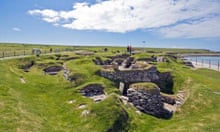
Readers' travel writing competition: a bus tour of Orkney, Scotland

A family ski trip to California: readers' travel writing competition

Readers' travel writing competition: city break to Hong Kong
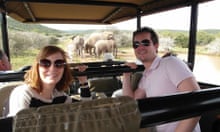
On safari in South Africa: readers' travel writing competition

A log cabin in Sherwood Forest: readers' travel writing competition

Readers' travel writing competition: hiking in Tarkine, Tasmania
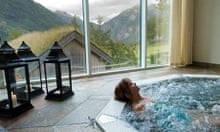
Readers' travel writing competition: spa and relaxation break in Norway

Readers' travel writing competition: hotel review of Peckforton Castle
Most viewed.
What You Should Know About Travel Writing
- An Introduction to Punctuation
- Ph.D., Rhetoric and English, University of Georgia
- M.A., Modern English and American Literature, University of Leicester
- B.A., English, State University of New York
Travel writing is a form of creative nonfiction in which the narrator's encounters with foreign places serve as the dominant subject. Also called travel literature .
"All travel writing—because it is writing—is made in the sense of being constructed, says Peter Hulme, "but travel writing cannot be made up without losing its designation" (quoted by Tim Youngs in The Cambridge Introduction to Travel Writing , 2013).
Notable contemporary travel writers in English include Paul Theroux, Susan Orlean, Bill Bryson , Pico Iyer, Rory MacLean, Mary Morris, Dennison Berwick, Jan Morris, Tony Horwitz, Jeffrey Tayler, and Tom Miller, among countless others.
Examples of Travel Writing
- "By the Railway Side" by Alice Meynell
- Lists and Anaphora in Bill Bryson's "Neither Here Nor There"
- Lists in William Least Heat-Moon's Place Description
- "London From a Distance" by Ford Madox Ford
- "Niagara Falls" by Rupert Brooke
- "Nights in London" by Thomas Burke
- "Of Trave," by Francis Bacon
- "Of Travel" by Owen Felltham
- "Rochester" by Nathaniel Hawthorne
Observations About Travel Writing
Authors, journalists, and others have attempted to describe travel writing, which is more difficult to do than you might think. However, these excerpts explain that travel writing—at a minimum—requires a sense of curiosity, awareness, and fun.
Thomas Swick
- "The best writers in the field [of travel writing] bring to it an indefatigable curiosity, a fierce intelligence that enables them to interpret, and a generous heart that allows them to connect. Without resorting to invention , they make ample use of their imaginations. . . . "The travel book itself has a similar grab bag quality. It incorporates the characters and plot line of a novel, the descriptive power of poetry, the substance of a history lesson, the discursiveness of an essay , and the—often inadvertent—self-revelation of a memoir . It revels in the particular while occasionally illuminating the universal. It colors and shapes and fills in gaps. Because it results from displacement, it is frequently funny. It takes readers for a spin (and shows them, usually, how lucky they are). It humanizes the alien. More often than not it celebrates the unsung. It uncovers truths that are stranger than fiction. It gives eyewitness proof of life’s infinite possibilities." ("Not a Tourist." The Wilson Quarterly , Winter 2010)
Casey Blanton
- "There exists at the center of travel books like [Graham] Greene's Journey Without Maps or [V.S.] Naipaul's An Area of Darkness a mediating consciousness that monitors the journey, judges, thinks, confesses, changes, and even grows. This narrator , so central to what we have come to expect in modern travel writing , is a relatively new ingredient in travel literature, but it is one that irrevocably changed the genre . . . . "Freed from strictly chronological , fact-driven narratives , nearly all contemporary travel writers include their own dreams and memories of childhood as well as chunks of historical data and synopses of other travel books. Self reflexivity and instability, both as theme and style , offer the writer a way to show the effects of his or her own presence in a foreign country and to expose the arbitrariness of truth and the absence of norms." ( Travel Writing: The Self and the World . Routledge, 2002)
Frances Mayes
- "Some travel writers can become serious to the point of lapsing into good ol' American puritanism. . . . What nonsense! I have traveled much in Concord. Good travel writing can be as much about having a good time as about eating grubs and chasing drug lords. . . . [T]ravel is for learning, for fun, for escape, for personal quests, for challenge, for exploration, for opening the imagination to other lives and languages." (Introduction to The Best American Travel Writing 2002 . Houghton, 2002)
Travel Writers on Travel Writing
In the past, travel writing was considered to be nothing more than the detailing of specific routes to various destinations. Today, however, travel writing has become much more. Read on to find out what famous travel writers such as V.S. Naipaul and Paul Theroux say about the profession.
V.S. Naipaul
- "My books have to be called ' travel writing ,' but that can be misleading because in the old days travel writing was essentially done by men describing the routes they were taking. . . . What I do is quite different. I travel on a theme . I travel to make an inquiry. I am not a journalist. I am taking with me the gifts of sympathy, observation, and curiosity that I developed as an imaginative writer. The books I write now, these inquiries, are really constructed narratives." (Interview with Ahmed Rashid, "Death of the Novel." The Observer , Feb. 25, 1996)
Paul Theroux
- - "Most travel narratives—perhaps all of them, the classics anyway—describe the miseries and splendors of going from one remote place to another. The quest, the getting there, the difficulty of the road is the story; the journey, not the arrival, matters, and most of the time the traveler—the traveler’s mood, especially—is the subject of the whole business. I have made a career out of this sort of slogging and self-portraiture, travel writing as diffused autobiography ; and so have many others in the old, laborious look-at-me way that informs travel writing ." (Paul Theroux, "The Soul of the South." Smithsonian Magazine , July-August 2014) - "Most visitors to coastal Maine know it in the summer. In the nature of visitation, people show up in the season. The snow and ice are a bleak memory now on the long warm days of early summer, but it seems to me that to understand a place best, the visitor needs to see figures in a landscape in all seasons. Maine is a joy in the summer. But the soul of Maine is more apparent in the winter. You see that the population is actually quite small, the roads are empty, some of the restaurants are closed, the houses of the summer people are dark, their driveways unplowed. But Maine out of season is unmistakably a great destination: hospitable, good-humored, plenty of elbow room, short days, dark nights of crackling ice crystals. "Winter is a season of recovery and preparation. Boats are repaired, traps fixed, nets mended. “I need the winter to rest my body,” my friend the lobsterman told me, speaking of how he suspended his lobstering in December and did not resume until April. . . ." ("The Wicked Coast." The Atlantic , June 2011)
Susan Orlean
- - "To be honest, I view all stories as journeys. Journeys are the essential text of the human experience—the journey from birth to death, from innocence to wisdom, from ignorance to knowledge, from where we start to where we end. There is almost no piece of important writing—the Bible, the Odyssey , Chaucer, Ulysses —that isn't explicitly or implicitly the story of a journey. Even when I don't actually go anywhere for a particular story, the way I report is to immerse myself in something I usually know very little about, and what I experience is the journey toward a grasp of what I've seen." (Susan Orlean, Introduction to My Kind of Place: Travel Stories from a Woman Who's Been Everywhere . Random House, 2004) - "When I went to Scotland for a friend's wedding last summer, I didn't plan on firing a gun. Getting into a fistfight, maybe; hurling insults about badly dressed bridesmaids, of course; but I didn't expect to shoot or get shot at. The wedding was taking place in a medieval castle in a speck of a village called Biggar. There was not a lot to do in Biggar, but the caretaker of the castle had skeet-shooting gear, and the male guests announced that before the rehearsal dinner they were going to give it a go. The women were advised to knit or shop or something. I don't know if any of us women actually wanted to join them, but we didn't want to be left out, so we insisted on coming along. . . ." (Opening paragraph of "Shooting Party." The New Yorker , September 29, 1999)
Jonathan Raban
- - "As a literary form, travel writing is a notoriously raffish open house where different genres are likely to end up in the bed. It accommodates the private diary , the essay , the short story, the prose poem, the rough note and polished table talk with indiscriminate hospitality. It freely mixes narrative and discursive writing." ( For Love & Money: Writing - Reading - Travelling 1968-1987 . Picador, 1988)
- - "Travel in its purest form requires no certain destination, no fixed itinerary, no advance reservation and no return ticket, for you are trying to launch yourself onto the haphazard drift of things, and put yourself in the way of whatever changes the journey may throw up. It's when you miss the one flight of the week, when the expected friend fails to show, when the pre-booked hotel reveals itself as a collection of steel joists stuck into a ravaged hillside, when a stranger asks you to share the cost of a hired car to a town whose name you've never heard, that you begin to travel in earnest." ("Why Travel?" Driving Home: An American Journey . Pantheon, 2011)
- 100 Major Works of Modern Creative Nonfiction
- What is Nature Writing?
- Defining Nonfiction Writing
- Creative Nonfiction
- First-Person Point of View
- Sports Writing as a Form of Creative Nonfiction
- Point of View in Grammar and Composition
- Tips on Great Writing: Setting the Scene
- An Introduction to Literary Nonfiction
- John McPhee: His Life and Work
- Definition and Examples of Humorous Essays
- 11 Things You Should Know About Trees
- The Life and Travels of Ibn Battuta, World Explorer and Writer
- How to Summarize a Plot
6 examples of gorgeous travel writing
Inspiration to help your next travel blog, guidebook, or article stand out from the crowd.

We live on a wondrous, ever-changing planet— from alpine lakes and cloud forests to ancient cobblestoned cities.
The best travel writers can transport readers to these far-flung destinations, and to introduce them to new cultures and experiences. When done well, travel writing can be an insightful, thought-provoking and even life-changing genre of writing.
And with interactive content platforms, it’s possible for travel writers to create truly immersive reading experiences online. In this guide, we introduce six ideas — and examples of travel writing — to help you create beautiful, interactive travel stories.
Whether you're a beginner travel writer, a publisher, destination marketer, or freelance travel blogger, we've got plenty of inspiration to get you started.
What do the BBC, Tripadvisor, and Penguin have in common? They craft stunning, interactive web content with Shorthand. And so can you! Publish your first story for free — no code or web design skills required. Sign up now.
The features of great travel writing

The best travel writing is unique, but there are still some general guidelines you’ll want to follow to make your travel writing stand out from the pack. Here are some travel writing tips to help you compete with the best examples of the genre.
- Have a point of view. Great travel writers — from the travel books of Bill Bryson and John Steinbeck to the documentaries of Paul Theroux — all have very specific points of view that are difficult to copy. Find your voice, and your travel articles will truly sing.
- Take great photos. The best travel writing is visually immersive, using high resolution images and video to engage the reader’s senses. Even if you’re not creating a photo essay , modern travel writing relies of great visual assets.
- Use multimedia content where you can. If you can, create audio and video assets, too, and consider building out your story with a digital storytelling platform to use interactive features. Embed podcasts and clips to keep the reader engaged.
- Learn from the best. Keep track of longform feature stories in the New York Times and the Washington Post, and steal their techniques. (Good travel writers borrow, great travel writers steal, to butcher TS Eliot.)
- Create a beautiful web presence. We love the print Lonely Planet travel guides, but these days you need to produce stunningly engaging content on the web. Standards are high, but you’d be amazed what you can do with modern interactive content platforms.
- Provide a sense of adventure — even if you’re not strictly doing ‘adventure travel’. Whether you’re writing a first person travel memoir or writing about your backpacker’s trip through the Amazon, you want to keep your reader engaged with your travel experiences.
- Make it educational. Teach the reader something new about the world they’re exploring.
- Edit your work. The best travel writers kill their darlings and pay attention to details — hello, commas — knowing that this is how the best work is created.
Want to improve the efficiency of your writing process? Check out our list of the best writing tools .

Inspire readers and move them to action by exploring a location's unique history and culture. By focusing on just one place, your readers get the chance to experience it deeply through your words and imagery.
Intrepid Travel's Shorthand story 'Welcome to Olkola Country' is simple, yet effective. The highlight of the story is its elegant writing — a blend of reporting and personal narrative that explores the history, culture, and ecology of an ancestral land of the Olkola people in Australia. The story is elevated with thoughtful photos and videos, and ends with a call to action for the newly-inspired reader.
Looking for more inspiration? Check out our roundup of ten stunning photo essay examples .
The right images can make a story feel polished and inspired.
2 . Time travel

Taking readers back through historical moments is a great way to achieve more depth in your stories.
In the story The Museum of Atari, Mario and Electronic Childhood Dreams , Channel News Asia uses Shorthand to create a stunning visual story about a little-known museum of retro video games in Singapore. The highlight of the story is an interactive scrollytelling timeline about the history of video games, which is created using the Shorthand Reveal feature and animates a pixel character as the reader scrolls.
Our Reveal section allows animations like this to be controlled by the reader's scrolling.
3 . Immerse your reader

When words and photos simply aren't enough to convey the complexity of a travel story, add another layer of reader engagement using various forms of media.
The Sydney Opera House story A Guide to Dance Rites uses multimedia to bring indigenous culture to life. With elements like animation, slideshows, and embedded audio clips, readers can feel fully immersed in one of Australia's most traditional dance competitions.
Embed your own code to add further customisation to your story.
With Shorthand, remember that you always have the option to add custom HTML to add further customisations to your stories. See a list of our recommended third party tools in this support document .
4 . Just the highlights

Not every trip allows for the luxury of time. In order to get the point across, sometimes a quick and to-the-point listicle is all that's necessary to deliver a clear and time-efficient message.
Mansion Global's story 6 Cities, 6 Continents takes a quick jaunt around the world to some of the best cities to buy a dream vacation home. The destinations are all tied together by an interactive map that tracks a route between the cities — a creative use of the Shorthand Reveal section .
Interactive maps can help connect different locations in your story.
5 . Keep it practical

Travel stories don't always need to inspire wanderlust or transport readers to far-flung destinations. Some of the most effective and important travel stories simply provide practical advice — whether that's how to exchange currency, say "thank you" in a foreign language, or avoid danger.
Travel Weekly's story Traveling While Female explores how female travellers can stay safe, and uses data to stress the importance of improving women's safety abroad. By displaying the data as interactive graphics, Travel Weekly draws extra emphasis to key statistics.
Make your data memorable by giving it special emphasis.
6. Zoom out

When you've written a couple of beautiful travel stories, what's next?
Tie together your creative vision by consolidating your stories into a single landing page. You can use Shorthand to create a home for all of your stories, whether that's by using our Collection section or by including links in other section types.
For example, Luxury Travel nests all of their feature content within a Shorthand story. The page takes advantage of our media-rich sections to create a scrolling archive of their beautiful travel stories.
Consolidate your features in a single Shorthand story.
There are myriad ways to turn a Shorthand story into a landing page. Here's another example from Perth Now, which takes a simple, colourful approach.
There are many ways to customise a Shorthand story to serve as a landing page.
Creating a unique online travel story can seem like a daunting task, but Shorthand's many easy-to-use features exist to help make your stories exceptional. There are thousands of destinations waiting to be written about, and we can't wait to see where your stories take us next.
Publish your first story free with Shorthand
Craft sumptuous content at speed. No code required.
Types of Travel Writing

Paul Theroux called it “ maddening .” Jonathan Raban called it a “ raffish open house where very different genres are likely to end up in the same bed .” Call it what you will, travel writing is a diverse genre, and the forms it can take are virtually endless.
But if travel writing is such a confusing and promiscuous genre, how can we make sense of it all?
Categorizing travel writing
There are many ways to explore and question travel writing as a genre. Is the author self-effacing or is the author an important part of the story? Does the writing have a plot, or is it essentially without a story? Is the account truthful, fictional, or some weird combination therein?
These are legitimate questions.
But one of the most helpful ways to categorize travel writing is to follow in the footsteps of Paul Fussell, who sketched a framework helpful in classifying travel writing in his 1980 study Abroad .
In Abroad , Fussell’s primary interest was the travel book, against which he contrasted the travel guidebook in a chapter about travel books as literary phenomena. Fussell says: “A guidebook is addressed to those who plan to follow the traveler […]. A travel book, at its purest, is addressed to those who do not plan to follow the traveler at all…”
Two types of travel writing
Paul Fussell was talking about the book form, but he essentially categorized travel writing into two main types depending on its practical or literary intent. Carl Thompson discusses this further in his book Travel Writing .
The sniff test is to ask whether the writing aims to be promotional, practical, or helpful. If the answer is yes, this is commercial travel writing . Probably.
What is commercial travel writing?
The aim of commercial travel writing is to market, to promote, to serve, and/or to help travelers and tourists have better experiences traveling. Readers consume it for its practical information. Commercial travel writing often has ties to the larger travel and tourism industry.
Commercial travel writing can come in the form of guidebooks, top-ten lists, best-of lists, articles, destination pieces, itineraries, journalism, restaurant and hotel reviews, how-to guides, side-trip suggestions, advertorials, marketing copy, and other service-oriented articles.
Paul Theroux said that it is “market-driven—intending to sell vacations, hotel rooms, restaurant meals, and it is nearly always upbeat. […] It informs vacationers who have limited time to travel and services the travel industry.”
Is the goal to inspire travel, to give council or advice, to help, to serve, to offer pointers and tips, or to help others figure out where to go, what to do, and what to eat? If so, this is commercial travel writing.
What is literary travel writing?
The aim of literary travel writing is to entertain. Readers consume it “for pleasure, and for its aesthetic merits,” Thompson notes, instead of for practical insight.
Literary travel writing can take the shape of books, novels, memoirs, articles, poems, journals and diaries, journalism, personal essays, travelogues , op-eds, blog posts, and other more experimental forms of writing.
Is the goal to tell a story, to entertain, to humor, to express a fundamental truth about humanity? If so, this is literary travel writing.
Mathilde Poizat-Amar says that travel literature “excludes non literary texts.” What she means by “literary texts” are texts that attempt to be more concerned with writing as a form of art.
Just the tip of the iceberg
As you can see in the diagram above, these categories can overlap. There is space for other categories and subdivisions to emerge. And the commercial/literary distinction is not the only one to make.
For example, where do academic studies, industry reports, and scientific reports fit into this categorization? These forms don’t often have a commercial or literary intent. Perhaps critical travel writing is a better category. Can’t journalism fit into this category too? And what about journals and diaries-are they really literary? Does a non-profit organization’s “practical” travel information really have a “commercial” intent?
Dr. Poizat-Amar notes that in travel writing as a whole “the critical terminology that we usually use to describe texts does not really work.”
Similarities between commercial and literary travel writing
It is not uncommon for “literary” travel writers to disparage commercial travel writers. Fussell, for example, does not hide his cards when discussing his appreciation for “real” travel writing over commercial travel writing, as he does with his preference for “real” travel over tourism.
But who hasn’t before been charmed by an advertorial’s elegant language? Who hasn’t before cast aside an insufferable book written by a supposed “literary heavyweight?”
We will leave the academics to dispute whether something is “artistic.” What is indisputable is that travel writing, whichever form it assumes, is inherently creative.
And what makes travel writing “maddening” then is its greatest and most powerful asset: its formal diversity and its ability to assume new forms.
Last Updated on 21 September 2020 by Travel Writing World
Share this:
- Click to share on Twitter (Opens in new window)
- Click to share on Facebook (Opens in new window)
- Click to share on WhatsApp (Opens in new window)
- Click to share on Pinterest (Opens in new window)
- Click to share on Tumblr (Opens in new window)
- Click to share on Reddit (Opens in new window)
- Click to print (Opens in new window)
- Click to email a link to a friend (Opens in new window)
- Click to share on LinkedIn (Opens in new window)
- Click to share on Pocket (Opens in new window)
- Click to share on Telegram (Opens in new window)

Travel Writing World
With an emphasis on travel books and long-form travel literature, host Jeremy Bassetti talks with the world’s most inspiring travel writers about their work and about the business and craft of travel writing in this award-winning podcast and website. In addition to the podcast, the site also features travel writer profiles, book reviews, and articles.
You may also like
Travel books to celebrate hispanic heritage month, the 30 best travel books about spain, distance in travel writing, how to turn a thesis into a travel..., capturing a sense of place in travel blogging, travel book guidebook (free pdf download), leave a comment cancel reply.
Save my name, email, and website in this browser for the next time I comment.
Notify me of follow-up comments by email.
This site uses Akismet to reduce spam. Learn how your comment data is processed .
This website uses cookies to improve your experience. We'll assume you're ok with this, but you can opt-out if you wish. Accept Read More
National Geographic content straight to your inbox—sign up for our popular newsletters here

- INTELLIGENT TRAVEL
Why (and How) Travel Writing Moves Us
I sat down with Don George , editor at large at National Geographic Traveler and author of Lonely Planet Guide to Travel Writing , and asked him to wax philosophical about how and why travel writing gets under our skin, who inspired him to become a travel writer in the first place, and what he thinks about the explosion of travel blogging and the future of the craft itself.
Here’s what he had to say:
Leslie Trew Magraw: Why do you think travel writing has such a wide appeal?
Don George: Really great travel writing is ultimately about connection.
As human beings, connection is incredibly incredibly important to all of us; it’s the thing we need to keep going. And, so, when we vicariously are connected to a place and an experience that has very much gotten inside of a writer and moved him in some way, it enriches us and expands us–which, I think, is why great travel writing has this allure, this influence, this effect. You feel like a bigger richer better human being for having read it, whether it’s an article in a magazine, a blog post, or a book.
On another level I think there is a popular sense that what travel writers do is kind of go “la la la” around the planet and have wonderful experiences and write about them and, somehow, someone magically pays for them, and what could be better than the life of the travel writer? Those of us who actually make a living in the field know that while there are moments of that, there are lots and lots of moments when we are somewhere thinking, “Why in the world did I become a travel writer?”
For me, I have to say I feel incredibly lucky to have made my living as a travel writer and editor. I can’t imagine a more fulfilling thing. Part of that fulfillment is getting to connect with readers, which enriches my life in ways I can’t express. I feel like a bigger, fuller, richer human being because of the way readers have reacted to my pieces.
LTM: Is there someone you can point to that you can learn about the craft from?
DG: The person I consider to be my personal mentor in this regard is John McPhee . He’s been a staff writer at The New Yorker forever.
[At Princeton] he taught me that non-fiction writing is every bit as worthy as fiction writing, that a great non-fiction writer should be revered in the same way a novelist is, that writing really is a craft –something you can work at and improve, that every single word counts, and that reading is just as important of an act for a writer as writing. He made me respect the very act of non-fiction writing–both the responsibility that you have as a non-fiction writer and the opportunity that you have.
I hold him up hugely as an example of a great writer who gets research right, his sentences are meticulous. He is just an amazing case study for what great writing is.
LTM: What’s your favorite piece of travel writing?
DG: For me the best travel book ever written is The Snow Leopard by Peter Matthiessen . It’s an amazing textbook on some level about how incredibly rich and engaging a work of non-fiction can be. It also literally changed my life because it inspired me to make a decision that I had been afraid to make: to take the leap and become a travel writer myself.
Pico Iyer is another writer that I just revere because his sentences are just so incredibly polished and honed and lyrical, and the rhythms of his writing are so beautifully modulated.
- Nat Geo Expeditions
LTM: How do you feel about the explosion of travel blogging, and what do you feel are a writer’s responsibilities to his or her readers, regardless of the platform he or she is using?
DG: I have deeply ambivalent feelings about the explosion of blogging. On the one hand, I think it’s very liberating for writers to realize that they can just publish their own work–that they don’t have to deal with the whole traditional process of submitting their work to an editor who may not read it, like it, or publish it.
While that’s great, it means that, as a reader, you have to wade through this forest of uncurated content to find the good stuff. That’s hugely daunting for readers and, in a way, it’s kind of daunting for writers, too. Even though it might be easy to publish yourself, there is a certain lack of incentive to make yourself better or to hold yourself to a higher standard.
In this vein, I think that it’s important for bloggers to keep in mind that they are serving a reader, and that the reader deserves the most accurate content, the most honest content, and the highest quality content possible. It’s really all about engagement. I think it’s crucial for bloggers to keep certain standards in mind and to think about the writer/reader relationship. In my mind it’s a sacred relationship that needs to be nurtured and respected.
Leslie Trew Magraw is the editor and producer of the Intelligent Travel blog network at National Geographic. Follow her on Twitter @leslietrew .
Related Topics
You may also like.

Top travel reads for 2024, from memoirs to nature writing

The Masterclasses 2023: 10 travel writing tips from our experts
Free bonus issue.

Why it's high time for slow travel in Gstaad, Switzerland

The future of rail travel in the UK looks bleak. Here's why.

How to make travel more accessible to the blind

Don’t rely on social media: Here’s why you should keep a travel journal

How destinations are helping LGBTQ+ visitors travel with pride
- Environment
- Perpetual Planet
History & Culture
- History & Culture
- History Magazine
- Mind, Body, Wonder
- Paid Content
- Terms of Use
- Privacy Policy
- Your US State Privacy Rights
- Children's Online Privacy Policy
- Interest-Based Ads
- About Nielsen Measurement
- Do Not Sell or Share My Personal Information
- Nat Geo Home
- Attend a Live Event
- Book a Trip
- Inspire Your Kids
- Shop Nat Geo
- Visit the D.C. Museum
- Learn About Our Impact
- Support Our Mission
- Advertise With Us
- Customer Service
- Renew Subscription
- Manage Your Subscription
- Work at Nat Geo
- Sign Up for Our Newsletters
- Contribute to Protect the Planet
Copyright © 1996-2015 National Geographic Society Copyright © 2015-2024 National Geographic Partners, LLC. All rights reserved
Trending Post : 52 Best Things to do in Ireland

Great Travel Writing Examples from World Renowned Travel Writers
Are you ready to be a better travel writer? One of the best ways to do this is to read great travel writing examples from great travel writers.
Writing about travel in a way that keeps your reader reading is not always easy. Knowing how to write an irresistible first paragraph to entice the reader to keep reading is key. Writing a lede paragraph that convinces the reader to finish the article, story or book is great travel writing. This article features travel writing examples from award-winning travel writers, top-selling books, New York Times travel writers, and award-winning travel blogs.
Ads are how we pay our bills and keep our blog free for you to enjoy. We also use affiliate links; if you make a purchase through them, we may receive a small commission at no cost to you.

The writers featured in this article are some of my personal favorite travel writers. I am lucky to have met most of them in person and even luckier to consider many friends. Many I have interviewed on my podcast and have learned writing tips from their years of travel writing, editing and wisdom.
11 Great Travel Writing Examples
Writing with feeling, tone, and point of view creates a compelling story. Below are examples of travel writing that include; first paragraphs, middle paragraphs, and final paragraphs for both travel articles as well as travel books.
I hope the below examples of travel writing inspire you to write more, study great travel writing and take your writing to a higher level.
Writing Example of a Travel Book Closing Paragraphs

Don George is the author of the award-winning anthology The Way of Wanderlust: The Best Travel Writing of Don George , and the best-selling travel writing guide in the world: How to Be a Travel Writer .
He is currently Editor at Large for National Geographic Travel, and has been Travel Editor at the San Francisco Examiner-Chronicle, Salon, and Lonely Planet.
I had the wonderful opportunity to see Don speak at Tbex and read from one of his books as well as interview him on the Break Into Travel Writing podcast. You can listen to the full podcast here .
Below is the closing of Don’s ebook: Wanderlust in the Time of Coronavirus: Dispatches from a Year of Traveling Close to Home
I continued hiking up to Lost Trail and then along Canopy View Trail. Around noon I serendipitously came upon a bench by the side of the trail, parked my backpack, and unpacked my lunch. Along with my sandwiches and carrot sticks, I feasted on the tranquility and serenity, the sequoia-swabbed purity of the air, the bird and brook sounds and sun-baked earth and pine needle smells, the sunlight slanting through the branches, the bright patch of blue sky beyond.
At one point I thought of shinrin-yoku, forest bathing, the Japanese practice that has become widely popular in the U.S. This was a perfect example of shinrin-yoku, I thought: Here I am, alone in this forest, immersed in the sense and spirit of these old-growth redwoods, taking in their tranquility and timelessness, losing myself to their sheer size and age and their wild wisdom that fills the air.
I sat there for an hour, and let all the trials, tremors, and tribulations of the world I had left in the parking lot drift away. I felt grounded, calm, quiet—earth-bound, forest-embraced.
In another hour, or two, I would walk back to the main paved trail, where other pilgrims would be exclaiming in awe at the sacred sequoias, just as I had earlier that day.
But for now, I was content to root right here, on this blessed bench in the middle of nowhere, or rather, in the middle of everywhere, the wind whooshing through me, bird-chirps strung from my boughs, toes spreading under scratchy pine needles into hard-packed earth, sun-warmed canopy reaching for the sky, aging trunk textured by time, deep-pulsing, in the heart of Muir Woods.
- You can read the whole story here: Old Growth: Hiking into the Heart of Muir Woods
- Please also download Don’s free ebook here: Wanderlust in the Time of Coronavirus
- In addition to writing and editing, Don speaks at conferences, lectures on tours around the world, and teaches travel writing workshops through www.bookpassage.com .

Writing Example of a Travel Book Intro Paragraphs
Francis tapon.

Francis Tapon , author of Hike Your Own Hike and The Hidden Europe , also created a TV series and book called The Unseen Africa, which is based on his five-year journey across all 54 African countries.
He is a three-time TEDx speaker. His social media username is always FTapon. I interviewed Francis on the Break Into Travel Writing podcast about “How to Find An Original Point of View as a Travel Writer “. You can listen to the full podcast here .
Below is the opening of Francis’ book, The Hidden Europe:
“This would be a pretty lousy way to die,” I thought.
I was locked in an outhouse with no way out. Outhouses sometimes have two latches—one on the outside and one on the inside. The outside latch keeps the door shut to prevent rodents and other creatures who like hanging out in crap from coming in. Somehow, that outer latch accidentally closed, thereby locking me in this smelly toilet. I was wearing a thin rain jacket. The temperature was rapidly dropping.
“This stinks,” I mumbled. It was midnight, I was above the Arctic Circle, and the temperatures at night would be just above freezing. There was no one around for kilometers. If I didn’t get out, I could freeze to death in this tiny, smelly, fly-infested shithole.
My mom would kill me if I died so disgracefully. She would observe that when Elvis died next to a toilet, he was in Graceland. I, on the other hand, was in Finland, not far from Santa Claus. This Nordic country was a jump board for visiting all 25 nations in Eastern Europe.
You can find his book on Amazon: The Hidden Europe: What Eastern Europeans Can Teach Us
For $2 a month, you can get Francis’ book as he writes it: Patreon.com/ftapon
Intro (Lede) Paragraph Examples of Great Travel Writing Articles
Michele peterson.

Former banking executive Michele Peterson is a multi-award-winning travel and food writer who divides her time between Canada, Guatemala, and Mexico (or the nearest tropical beach).
Former banking executive Michele Peterson is a multi-award-winning travel and food writer who divides her time between Canada, Guatemala, and Mexico (or the nearest tropical beach). Her writing has appeared in Lonely Planet’s Mexico from the Source cookbook, National Geographic Traveler, Conde Nast’s Gold List, the Globe and Mail, Fifty-five Plus and more than 100 other online and print publications.
She blogs about world cuisine and sun destinations at A Taste for Travel website. I met Michele on my first media trip that took place in Nova Scotia, Canada. I also had the pleasure of interviewing about “ Why the Odds are in Your Favor if you Want to Become a Travel Writer” . You can listen to the full podcast here .
Michele’s Lede Paragraph Travel Writing Example
I’m hiking through a forest of oak trees following a farmer who is bleating like a pied piper. Emerging from a gully is a herd of black Iberian pigs, snuffling in response. If they weren’t so focused on following the swineherd, I would run for the hills. These pigs look nothing like the pink-cheeked Babe of Hollywood fame.
These are the world’s original swine, with lineage dating back to the Paleolithic Stone Age period where the earliest humans decorated Spain’s caves with images of wild boars. Their powerful hoofs stab the earth as they devour their prized food, the Spanish bellota acorn, as fast as the farmer can shake them from the tree with his long wooden staff. My experience is part of a culinary journey exploring the secrets of producingjamón ibérico de Bellota, one of the world’s finest hams.
You can read the full article here: Hunting for Jamón in Spain
Perry Garfinkel

Perry Garfinkel has been a journalist and author for an unbelievable 40 years, except for some years of defection into media/PR communications and consulting.
He is a contributor to The New York Times since the late ’80s, writing for many sections and departments. He has been an editor for, among others, the Boston Globe, the Middlesex News, and the Martha’s Vineyard Times.
He’s the author of the national bestseller “ Buddha or Bust: In Search of the Truth, Meaning, Happiness and the Man Who Found Them All ” and “ Travel Writing for Profit and Pleasure “.
Perry has been a guest on my podcast twice. He gave a “ Master Class in Travel Writing ” you can listen to the full podcast here . He also shared “ How to Find Your Point Of View as a Travel Writer ” you can listen to the full episode here .
Perry’s Lede Travel Article Example from the New York Times
SAN FRANCISCO — A block off Grant Avenue in San Francisco’s Chinatown – beyond the well-worn path tourists take past souvenir shops, restaurants and a dive saloon called the Buddha Bar – begins a historical tour of a more spiritual nature. Duck into a nondescript doorway at 125 Waverly Place, ascend five narrow flights and step into the first and oldest Buddhist temple in the United States.
At the Tien Hau Temple, before an intricately carved gilded wooden shrine and ornate Buddha statues, under dozens of paper lanterns, Buddhists in the Chinese tradition still burn pungent incense and leave offerings to the goddess Tien Hau in return for the promise of happiness and a long life.
You can read the full article here: Taking a Buddhist pilgrimage in San Francisco
Elaine Masters

Elaine Masters apologizes for pissing off fellow travelers while tracking story ideas, cultural clues, and inspiring images but can’t resist ducking in doorways or talking with strangers.
She’s recently been spotted driving her hybrid around the North American West Coast and diving cenotes in the Yucatan. Founder of Tripwellgal.com, Elaine covers mindful travel, local food, overlooked destinations and experiences. Elaine was a guest on my podcast where we spoke about “ How to Master the CVB Relationship “. You can listen to the full podcast here .
Elaine’s Lede Example
I jiggered my luggage onto the escalator crawling up to the street. As it rose into the afternoon light, an immense shadow rose over my shoulder. Stepping onto the sidewalk, I burst into giggles, looking like a madwoman, laughing alone on the busy Barcelona boulevard. The shadow looming overhead was the Sagrada Familia Cathedral. It had mesmerized me forty years earlier and it was the reason I’d finally returned to Spain.
You can read the full article here: Don’t Miss Going Inside Sagrada Familia, Barcelona’s Beloved Cathedral

Along with his wife, photographer Mary Gabbett, Bret Love is the Co-Founder/Editor In Chief of Green Global Travel and the Blue Ridge Mountains Travel Guide.
He’s also an award-winning writer whose work has been featured by more than 100 publications around the world, including National Geographic, Rolling Stone, American Way, the Washington Post, and the New York Times.
Bret’s Lede Example
Congo Square is quiet now. Traffic forms a dull drone in the distance. A lone percussionist taps out ancient tribal rhythms on a two-headed drum. An air compressor from Rampart Street road construction provides perfectly syncopated whooshes of accompaniment.
Shaded park benches are surrounded by blooming azaleas, magnolias, and massive live oaks that stretch to provide relief from the blazing midday sun. It’s an oasis of solitude directly across the street from the French Quarter.
Congo Square is quiet now. But it’s here that the seeds of American culture as we know it were sown more than 200 years ago. And the scents, sounds, and sights that originated here have never been more vital to New Orleans than they are now, more than a decade after Hurricane Katrina devastated the city.
You can read the full article here: Treme, New Orleans (How Congo Square Was The Birthplace Of American Culture)
Middle Paragraph Examples of Great Travel Writing Articles
Mariellen ward.

Canadian travel writer and blogger Mariellen Ward runs the award-winning travel site Breathedreamgo.com , inspired by her extensive travels in India.
She has been published in leading media outlets worldwide and offers custom tours to India through her company India for Beginners. Though Canadian by birth, Mariellen considers India to be her “soul culture” and she is passionate about encouraging mindful travel.
Mariellen’s Middle Paragraph Example
While the festival atmosphere swirled around me, I imbued my diya with hope for personal transformation. I had come to India because a river of loss had run through my life, and I had struggled with grief, despair and depression for eight years. I felt I was clinging to the bank, but the effort was wearing me out. Deciding to leave my life and go to India was like letting go of the bank and going with the flow of the river. I had no idea where it would lead me, what I would learn or how I would change. I only knew that it was going to be big.
You can read the full article here: The River: A tale of grief and healing in India

Joe Baur is an author and filmmaker from Cleveland currently based in Berlin. His work has appeared in a variety of international publications, including BBC Travel, National Geographic, and Deutsche Welle.
He regularly reports for the Jewish Telegraphic Agency and is the author of Talking Tico detailing his year of living in Costa Rica and traveling around Central America. I interviewed Joe about “ How to Find Unique Travel Stories “. You can listen to the full podcast here .
Joe Baur’s Middle Paragraph Example
I first became aware of the Harz mountains and the Brocken when reading the works of some of Germany’s great writers, like Goethe and Heinrich Heine. Legends of witches congregating with the devil being the main theme of the mountain’s mythology. I, however, was more interested in a refreshing time spent in nature rather than reveling with the devil.
The first stage from Osterode to Buntenbock was a warm-up to the more rigorous stages ahead. It began on sidewalks before sliding into the forest sporting a healthy shade of green — a gentle jaunt that made my hiking boots feel a bit like overkill given the dry, pleasant weather.
You can read the full article here: Follow the witch through the forest: 5 days hiking Germany’s Harz
Samantha Shea

Samantha is a freelance travel writer with bylines in Matador Network, GoNomad and more. She also runs the travel blog Intentional Detours which provides thorough guides and tales related to offbeat adventure travel in South Asia and beyond.
When she’s not writing she enjoys cycling, hiking, the beach, as well as language learning.
Samantha Shea’s Middle Paragraph Example
Suddenly, the spark of a match pulsed through the early-fall afternoon and my head snapped towards the men. Amir touched the flame to an unidentifiable object that seconds later made itself known by the deep earthy scent of Pakistani hashish.
Amir’s ice blue eyes focused intently on his creation: a combination of tobacco and nuggets of greenish-brown charas. He forced the mixture back into the cigarette, before bringing it to his pursed lips, flicking the match, and setting flame to his high.
I reached out from the cot to take my turn and took a deep inhale, acutely pleased. I savored the familiar burn of the drag, the rows and rows of corn and apple plants in front of me, the stuttered cacophony of animal exclamations behind me, and the generosity of the men to my left, some of whom we had just met an hour before.
You can read the full article here: Thall Tales: A Hazy Afternoon in Thall, Pakistan
Final Paragraph Example of Great Travel Writing Articles
Cassie bailey.
Cassie is a travel writer who has solo backpacked around Asia and the Balkans, and is currently based in Auckland. Alongside in-depth destination guides, her blog has a particular focus on storytelling, mental health, and neurodiversity.
Cassie’s Final Paragraphs Example
So my goal is to feel, I guess. And I don’t mean that in a dirty way (although obvz I do mean that in a dirty way too). This is why we travel, right? To taste crazy new foods and to feel the sea breeze against our skin or the burn on the back of our legs on the way down a mountain. We want to feel like shite getting off night buses at 4am and the sting of mosquito bites. We know we’re going to feel lost or frustrated or overwhelmed but we do it anyway. Because we know it’s worth it for the ecstasy of seeing a perfect view or making a new connection or finding shitty wine after a bad day.
My goal is never to become numb to all of this. To never kid myself into settling for less than everything our bodies allow us to perceive. I’m after the full human experience; every bit, every feeling.
You can read the full article here: Goals inspired by life as a solo backpacker
Lydia Carey

Lydia Carey is a freelance writer and translator based out of Mexico City who spends her time mangling the Spanish language, scouring the country for true stories and “researching” every taco stand in her neighborhood.
She is the author of “ Mexico City Streets: La Roma ,” a guide to one of Mexico City’s most eclectic neighborhoods and she chronicles her life in the city on her blog MexicoCityStreets.com .
Lydia’s Final Paragraphs Example
Guys from the barrio huddle around their motorcycles smoking weed and drinking forties. Entire families, each dressed as St. Jude, eat tacos al pastor and grilled corn on a stick. Police stand at a distance, keeping an eye on the crowd but trying not to get too involved.
After this celebration, many of the pilgrims will travel on to Puebla where they will visit some of the religious relics on display in the San Judas church there. But many more will simply go back to their trades—legal and illegal—hoping that their attendance will mean that San Judas protects them for another year, and that he has their back in this monster of a city.
You can read the full article here: San Judas de Tadeo: Mexico’s Defender of Lost Causes

I hope you enjoyed these examples of travel writing and they have inspired you to want to write more and write better! The next article that will be published is a follow-up to this and will include travel writing examples from my first travel writing teacher, Amanda Castleman. This article will include travel writing tips from Amanda and travel writing examples from her students as well as one from her own writing.

Follow 52 Perfect Days on Facebook | Twitter | Pinterest | Instagram
If you liked it, please share it. Thank you!
- Pinterest 1
Alexa Meisler is the editorial director of 52 Perfect Days. Born in Paris, France she has since lived in Chicago, San Francisco, Los Angeles and Portland, Oregon. She currently resides in San Diego with her husband and son where they enjoy exploring California and Mexico.
Travel has always been a part of her life; traveling to such places as Morocco, Tangiers and Spain as a young child as well as taking many road trips to Mexico with her grandparents as a young girl. Since then, she has traveled abroad to locations such as Russia, Taiwan and throughout Europe.
Prior to working at 52 Perfect Days she was a freelance travel writer; focusing on family and women’s adventure experiences.
Leave a Reply Cancel reply
Your email address will not be published. Required fields are marked *
Travel Stories
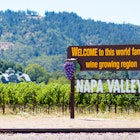
Apr 28, 2024 • 11 min read
With hundreds of wineries and restaurants, Napa is dizzying to first-time visitors. Our expert guide is here to help.
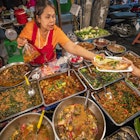
Apr 28, 2024 • 6 min read
Find out how to make your bhat stretch further with these budget travel tips for Chiang Mai, Thailand's “Capital in the North.”
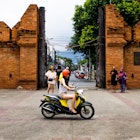
Apr 28, 2024 • 5 min read
Find the top spots for lively night markets, delicious street food and historic architecture with this neighborhood guide to Chiang Mai.
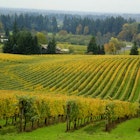
Apr 27, 2024 • 5 min read
If you’re curious about Oregon wines, start with this list of 10 standout wineries in the Willamette Valley, all of which offer a range of tastings.

Apr 27, 2024 • 6 min read
It may be Germany's most expensive city but there are still plenty of ways to visit Munich on a budget if you know how.
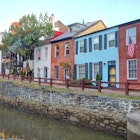
Apr 27, 2024 • 4 min read
Connect with Washington, DC's oldest neighborhood with this walking route.
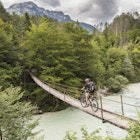
With affordable public transport, great food markets and discount cards, a visit to Slovenia needn't blow up your budget.
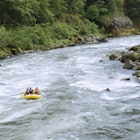
With top places to eat and drink, and outdoor activities to keep you entertained, Ashland offers far more that just the Oregon Shakespeare Festival.
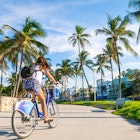
Apr 27, 2024 • 8 min read
Glitzy Miami could easily drain your vacation fund, but there are plenty of ways to save money in the the Magic City and still have a great time.

Apr 27, 2024 • 17 min read
Looking to travel to Germany in 2024? Here's your guide to maximizing points and miles to get there with all the perks.
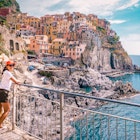
Apr 26, 2024 • 15 min read
Our expert deep dive into the many benefits of American Express Membership Rewards and Chase Ultimate Rewards.
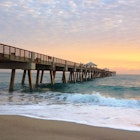
Apr 26, 2024 • 6 min read
Just a short hop from Miami are some of Florida's most alluring and well-known attractions – from the Everglades to the Venice of America.

Apr 26, 2024 • 12 min read
Get to Japan for less with this expert's guide to maximizing points and miles for your next big trip in 2024.

Apr 26, 2024 • 17 min read
Here's your guide to maximizing American Express Membership Rewards by leveraging a transfer partner.
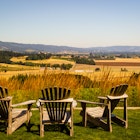
Apr 26, 2024 • 7 min read
Oregon's Willamette Valley is a hub for wine tourism. Plan your visit with this guide.
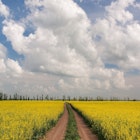
Plan your visit to Saskatoon, the largest city in the Canadian province of Saskatchewan, with our first-timer's guide.

Organizing a group trip can be a daunting task. That's why we've gathered nine destinations that will make a big gathering an unforgettable experience.

With rainy and smoky seasons, it can be tricky to choose the right time to visit Chiang Mai. Here are our tips.
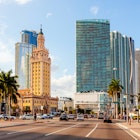
Apr 25, 2024 • 7 min read
Discover the best base for you on your Miami vacation with our insider guide to the city's best neighborhoods.
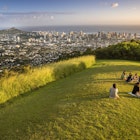
Oʻahu is the Hawaiian island that has everything. Here's the best way to spend a weekend there.

Apr 25, 2024 • 9 min read
Learn what our writer spent on a weekend in Copenhagen, Denmark, as part of our A Total Trip series.
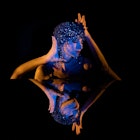
Apr 25, 2024 • 5 min read
You’ve surely heard of the Moulin Rouge – yet the Crazy Horse might be Paris’ most sophisticated cabaret.

Beginners Guide to Travel Writing
So you want to be a travel writer? Good. You can! This beginners guide to travel writing intends to answer your most basic questions and get you pointed in the right direction.
Thousands of people from various backgrounds – many with no previous media or journalism experience – share stories of their trips and adventures on countless websites, blogs, magazines, newspapers, newsletters and social media platforms. No degree or certification is required and doing so doesn’t require a lot of money – no additional money, in fact, if you already own a computer with internet access and a smart phone.
At its best, travel writing offers deep personal enrichment, unforgettable experiences and a little side income to boot. Understand this, however, pursuing travel writing typically works best for those using it as a side hustle, primarily for experiences and perks, or in retirement, separate of a primary income. While there are thousands of travel writers, there are very few full-time, on-staff with a media outlet, professional, this-is-how-I-support-myself travel writers. There are more professional athletes than there are travel writers making their living exclusively this way.
As you read our guide to travel writing for beginners , no attempt will be made to sugarcoat the realities, to oversell the benefits or discount the obstacles. This guide is informed directly by the personal experiences of TRAVEL WRITERS UNIVERSITY and the TRAVEL WRITERS CAFÉ staff and the hundreds of successful and failed beginning travel writers we have worked with.
The best news is, if you’re serious about starting travel writing, there is a proven, repeatable, simple – but not easy – step-by-step process to follow which will get you there and a supportive network of likeminded people going through a similar journey. The process and teachings are cataloged in detail at TRAVEL WRITERS UNIVERSITY and the support network exists in our TRAVEL WRITER’S CAFÉ Facebook group.
TWU is a premium on-line resource where members receive access to hundreds of informational articles related to advancing in the field from tips on improving your writing and photography, to editor contact information and pitching strategy. The CAFÉ is our Facebook members community where we share member’s published stories, hot leads from editors looking for pitches, and general support along with regular instructional video webinars and chats. One monthly membership of only $49 dollars provides access to both services.
TWU and CAFÉ founder Noreen Kompanik started her travel writing career exactly where you are today . She was a registered nurse who loved traveling with no writing experience. She was intrigued about the possibilities of travel writing. Through some relatively expensive in-person and online courses, a lot of trial and error, and dogged determination, she has worked her way to the top of the travel writing profession with over 600 “bylines” – published stories – in major print and digital outlets. She takes roughly 20 “press trips” – all expenses paid, invitation only trips to write about a destination or accommodation – every year to Europe, Mexico, the Caribbean and across the United States. She earns tens of thousands of dollars annually for the privilege of doing so.
This lifestyle can be the upside of travel writing.
TWU and the CAFÉ share what she’s learned, along with the expertise of her travel writer business partners, streamlining the process from beginner to intermediate , providing a clear blueprint to follow in her footsteps.
TRAVEL WRITERS UNIVERSITY / TRAVEL WRITERS CAFÉ ADVANTAGE
“I love being a part of the community where I can learn from the best what I need to succeed as a travel writer. The monthly Roadmaps and Bonus Articles include actionable information that has upped my writer’s game. Opening the Travel Write’s Cafe Facebook group is the first thing I do each morning. The support and encouragement from fellow members helps me to stay motivated. Kristi and Noreen have given me the tools and confidence I need to continue to reach for higher goals. In the past year, I have landed press trips I never dreamed would happen.” – TRAVEL WRITERS CAFÉ member Sharon Kurtz.
Freelancing

As mentioned, full-time travel writing jobs are exceptionally scarce. Filling them, most times, are writers, reporters and journalists with degrees in those fields and years of experience which have allowed them to slowly work up the ranks in that field.
Don’t let that discourage you. The VAST majority of travel writing is not done by these people, it’s done by a global community of freelancers. Freelancers are non-staff writers, independent contractors typically writing for a variety of different publications – online and in print.
Publications would love to have large teams of exclusively staff writers producing stories, but doing so is far too expensive. Even two or three staff writers earning a livable salary with benefits and travel stipends to report their stories would require a vastly greater investment from the publication than using even hundreds of freelancers each year and paying them a couple hundred dollars per article.
Freelancing is a hustle, no doubt, but if you want to start travel writing without starting your own blog or website – and we’ll get to that later – freelancing is how you’re going to do it.
Almost all travel publications, even the big ones like National Geographic and BBC, rely heavily on freelancers for content (stories). Freelancing involves “pitching” editors story ideas you’d like to write. This means sending the editor(s) at the publication you’d like to see your article appear in an email detailing the story you’d like to write and why it would be a good fit for that outlet.

Who to pitch? Where to pitch? How to pitch?
These are the first obstacles encountered by beginning travel writers. At TWU and in the CAFÉ, we take the mystery out of this process leading writers by the hand through it. With our travel media industry contacts, we have hundreds of editor email addresses and are constantly updating our members about new writing opportunities.
Travel publications NEED content. They NEED freelancers. They’re constantly on the lookout for new writers. We go where they go to look for writers and pass their “calls for submission” – want ads for stories – on to our members.
To have stories published as a freelancer, you first pitch publications and if they’re interested, an editor will tell you exactly what story angle to take, word length, etc.
Pitching editors can be a time consuming, exhausting, frustrating effort. For beginners and experienced travel writers alike, many pitches go unanswered. Pitching also happens to be essential for beginning and advancing your travel writing journey.
At TWU and the CAFÉ, we make this process as painless as possible by continually providing members hot leads to editors looking for stories – editors with smaller publications and at the biggest media companies. Editors across the globe looking for an endless variety of stories from all seven continents and subjects ranging from dining and drinking, to resorts, museums, family travel, budget travel, sports, theme parks, art and culture, nature, history, outdoors, all-inclusive, you name it.
Our expert staff personally review member pitches when necessary, making sure every word is just right to maximize its potential for being accepted.
TWU co-founder Kristi Dosh ran her own successful public relations company, Guide My Brand , for several years. She successfully pitched her clients to media outlets across the world. She is an expert on pitching and works with TWU and CAFÉ members on crafting their pitches.
TWU also provides members with instructional ROADMAPS to improve their pitching success . ROADMAPS are detailed explainers written by seasoned travel writers providing insight into a specific travel writing related subject. ROADMAPS are one of the most important resources offered by TWU for beginning and intermediate travel writers alike
ROADMAPS focused on pitching include:
“Perfecting your pitch strategy”
“Improve your pitching success with timing”
“Pitches that work”
“Overcoming your fear of pitching”
“Successful pitches – word for word!”
TWU and CAFÉ members also have the opportunity to receive individual help with their pitching and specific pitches. Our pitch review service puts your pitches in the hands of our experts for a word-by-word analysis to ensure your pitch has the greatest opportunity at success.
TRAVEL WRITERS UNIVERSITY / TRAVEL WRITER’S CAFÉ ADVANTAGE
Not only do we aide writers with their pitch strategy and individual pitches, we connect our writers directly to editors. This may be the most valuable service offered at TWU and in the CAFÉ.
TWU has an entire section of FEATURED PUBLICATIONS profiling dozens of travel-related outlets in-depth, what kind of stories they’re looking for, and contact information for editors.
TWU also features ROUNDUPS , bite-sized entries offering hundreds of suggested travel publications to write for and how to contact them.
Check out this FREE article specifically for beginners providing a list of 13 travel websites which accept pitches and stories from FIRST-TIME, unpublished writers.
Another obstacle beginning writers face is how to achieve their first few “clips” – examples of their published writing. Most editors require would-be writers send them links to a few of their previous clips to demonstrate their writing ability. Anyone new to travel writing, naturally, won’t have any examples of their previous work so this often presents a roadblock to advancement.
We remove that roadblock for beginners and, best of all, the TWU and CAFÉ travel writing ecosystem also includes our own travel websites! We own and operate Rovology.com , a general North American focused travel website, TravelbyVacationRental.com , a global review service for travel by vacation rental properties, and BookCottages.com , a European focused general travel and vacation rental review site.
Writing for these publications is open EXCLUSIVELY to TWU and CAFÉ members, guaranteeing our members respected bylines and advancing them through the difficult beginning stages of travel writing. Countless TWU and CAFÉ members have used story assignments and/or promised coverage on one of our owned and operated websites to secure free rental stays and travel perks.
Lastly, every Friday in the CAFÉ, we post FREELANCER FRIDAY compiling the best travel-related calls for submissions we’ve discovered after scouring our contacts and industry sites for travel editors in need of fresh stories.
Here’s an example of a FREELANCER FRIDAY from December of 2022:
No travel writing instructional service does more to put its writers directly in contact with editors than TWU and the CAFÉ. Period.
TWU and the CAFÉ go beyond the empty promises and lofty aspirations where other beginning travel writing educators stop. Our program offers serious tools for beginners committed to travel writing and access to resources clearly laying out the steps to follow to advance your career. Actionable, specific, detailed advice with direct, individual support available at every stage of your development.
Starting your own travel blog or website

Many beginning travel writers chose to start their own blog or website as opposed to, or in addition to, freelancing. Doing so prevents them from having to pitch ideas to editors and allows them to write about whatever they want, whenever they want, however they want. Until said blog or website begins receiving enough traffic to start generating revenue, this will be done without monetary reward, but the freedom and flexibility are attractive.
Starting your own travel blog or website does require additional knowledge of basic coding, content management systems, graphic design – or your willingness to pay someone for helping you. While not terribly expensive, the web hosting and support does require an additional monetary investment on your end.
Understanding search engine optimization best practices and social media marketing will prove invaluable in any effort to launch your own travel blog or website.
If you have these skills, if you’ve created websites previously, this may be the right path for you. Hundreds of travel bloggers writing for sites of their own creation you’ve never heard of make great money and travel widely producing content exclusively for their own sites. A hundred times more tried unsuccessfully and quit.
TWU co-founder Kristi Dosh also specializes in the economics and realities of launching personal websites. A blogger, website creator, writer, reporter and journalist since the early 2000s, Dosh has built a brand and career around her sports website – businessofcollegesports.com – and has also developed the TWU and CAFÉ owned and operated sites.
From SEO strategies and social sharing, to advertising networks, sponsored content, direct sales, affiliate sales, WordPress, web hosting, backlinks and more, Dosh understands the nitty-gritty, back-end work required of successful websites living in that world daily. She shares what she has learned and continues to learn through her ongoing education in these always-evolving field.
Dosh works regularly with TWU and CAFÉ members, counseling them on if starting a personal blog or website is a good idea for achieving their goals, and if so, how best to pursue doing so.
TWU has published a “travel blogging toolkit” to assist your efforts.
What to write about
Paris, London, Rome, African safari, India, Mexico City, Yellowstone National Park – all of these can make for wonderful travel stories. All of them have made for countless wonderful travel stories. Compelling travel writing, however, doesn’t require a popular destination, fabulous resort or luxury experience.
Chances are you live in, adjacent to or within 50 miles of a city, town, park, attraction, beach, river, lake, hotel, hiking trail, museum or historical site that people visit which, in the right hands, could make for a fantastic travel story. Does your city, or one nearby, host an annual festival, concert, sporting event? These can make for great stories.
Your beginning travel writing journey should start local, with what you know best. As much as travel publications are looking for once-in-a-lifetime “travel porn” stories from Tierra Del Fuego, they also want the quirky festival story from a small town. Under the radar, off the beaten path, undiscovered, out of the way locations and attractions which haven’t already been written about endlessly make for great pitches and stories.
Bottom line is, you needn’t spend a lot of money traveling to become a travel writer. Start in your own back yard.
We have an entire ROADMAP detailing how to start your travel writing career by focusing on stories local to you.
When thinking about what to write, and how to distinguish yourself in the crowded field of freelance travel writers, think about niches. What aspect of travel are you most passionate about? What aspect of travel are you most knowledgeable about?
TWU and CAFÉ expert and travel writer Chadd Scott has developed his personal niche of arts writing within the travel sector to a contributor position at Forbes.com and freelance bylines for Fodors.com, SouthernLiving.com and Afar.com, along with various print publications. Doing so has landed him so many press trip invitations, he’s had to TURN DOWN invitations to Venice, Vienna, Toronto, Miami and other destinations because he’s simply too busy.
Scott helps members define their niches, like he has. He’s found that by identifying a niche, writers are better able to focus their efforts and stand out to editors. Instead of writing about an ecotourism experience in Utah one week and air travel trends the next, writers committing to a niche they’re passionate and knowledgeable about write with greater authority and attract the attention of editors and industry professionals in those areas more quickly, accelerating their rate of advancement.
Effective niches are often related to geographies – specific cities, states/provinces, regions or countries. Madison, WI, British Columbia, England’s Lake District, Kenya. Scott has further established a niche around Florida, where he lives, hosting a weekly podcast and writing regularly about the state.
Effective niches can also be related to activity. Birdwatching, camping, backpacking, sailing, music, golf, genealogy.
Effective niches can target specific travelers: luxury travel, LGBTQ+ travel, travel for women, travel with kids, Black History travel, travel targeting specific religious affiliations.
Food and wine are popular travel niches. Too popular, in fact, to be effective for most. Drill down. Instead of defining your niche as “food” writing, how about pizza, barbecue, tacos, food trucks or sushi? Instead of writing about “wine,” focus on a specific varietal or region of production. Food and wine are such popular niches, you’ll need to drill down on them.
Anywhere people travel and anything they do while traveling or travel for, could represent a travel niche for you to explore and advance your career.
Here’s another FREE article from TRAVEL WRITERS UNIVERSITY offering advice to help start your creative juices flowing!
How good of a writer do I have to be?
Are you a good enough writer to be a travel writer? Answer these questions honestly:
- Do you like reading?
- Do you write clear, effective emails at work? Do you write professional proposals or summaries or reviews at your current job?
- Did you get good grades in grammar and writing classes?
- Could you write a good book review? Did you work for your student newspaper or yearbook?
- Do you enjoy writing? Do you journal?
- Do you have something to say? Are you funny? Are you observant? Are you empathetic?
If you answered “yes” to any of these questions, chances are, you are a good enough writer to begin travel writing. And you’ll improve the more you write.
Most travel writing isn’t brilliant prose. You don’t need to have Maya Angelou or Earnest Hemmingway talent to become a travel writer. It takes no particular storytelling genius to write “7 best pubs in Chicago” and similar list-based stories popular with many travel publications.
Writing is a talent, sure. We each have an innate ability to communicate through the written word we’re born with. It is also a skill that can be improved with instruction and practice.
Like most things in life, you don’t have to be great to start, but you’ve got to start to be great… and candidly, 99% of travel writers never achieve “great.”
TWU has published many ROADMAPS related to improving your writing including:
“5 structural elements of an article”
“Writing strong ledes” (a “lede” is an opening to a story)
“Creating a sense of place”
“Creating a compelling title”
“5 ways to become a better writer”
Our staff also offers one-on-one coaching to assist anyone who feels they need extra attention to improve their writing skills.
Expectations

When will that first press trip invitation to the Four Seasons in Fiji land in your inbox? Are you a celebrity with millions of social media followers and direct access to editors at major media outlets? If so, pretty soon. If not, it could take a while.
In all seriousness, beginning travel writing takes time. It takes time before you’re receiving invitations to free stays at hotels and free meals at chic restaurants. It takes time before you’re being paid for your writing. It takes time before your bylines appear in outlets your friends and family read.
How much time depends on your willingness to put in the work, to send the pitches, to be consistent with your efforts. Countless beginning travel writers who are all fired up about the potential of this pursuit lose interest after a few weeks and a few unreturned pitches. They lose interest when the reality of the grind and the work and the writing – which, make no mistake, is hard – push the fantasies of jetting off to Tokyo on a press trip out of their head.
They lose interest when life gets in the way. When kids and jobs and spouses and families evaporate their available free time to pitch and write and network and learn. When those same things fail to support the pursuit. When available nights and weekends to pursue beginning travel writing necessitate being filled with movies and music and downtime to give your body and mind a break.
Travel is supposed to be fun, and there’s nothing wrong with simply being a traveler, not a travel writer.
How do you know if you have what it takes?
Can you commit three hours a week to your beginning travel writing? To reading Roadmaps, to reading travel writing, to pitching, to writing? If so, if you adhere to the TWU program and participate in the CAFÉ, we can almost guarantee you’ll be a published travel writer after four months. Published in “Travel + Leisure?” No. Published somewhere, yes.
Will you get paid for that work? Maybe, maybe not. If you are paid, it might only be $20 USD. Even the biggest travel publications, the one’s you’ve heard of, only pay freelancers a few hundred dollars for articles of 1,000 words or more.
We can’t state this more directly, do NOT pursue beginning travel writing if your primary motivation for doing so is monetary.
When will that first press trip invitation come? Again, how fiercely are you willing to pursue this? To pitch? To write? To pitch progressively bigger and bigger outlets? Maybe a year? Probably longer, but here’s another benefit to membership with TWU and the CAFÉ: Noreen, Kristi, Chadd and our staff receive so many press trip invitations we can’t take them all and regularly share leads and contacts for them with members.
TWU and CAFÉ membership has been kept purposefully limited. We’re not spending thousands of dollars a month on Facebook ads targeting dreamers and the easily deceived into joining our programs with little hope of success. We take our greatest satisfaction in our members succeeding. In their bylines and press trips.
We are distinguished by the individual attention we provide our members. We don’t have thousands of members, we don’t have hundreds of members, but the members we do have, we care about, we support, and we are invested in seeing succeed.
We hope you’ll become one of those few and experience the rewards of travel writing we have.
Leave a Comment Cancel Reply
Your email address will not be published. Required fields are marked *
Save my name, email, and website in this browser for the next time I comment.

How To Write A Travel Guide
Editorial 0 comments 5154
How to write a travel guide: ’48 Hours in’
This article is a step-by-step guide showing you how to write a travel guide for the 48 Hours in series of travel guides.
I am subdiving this writing guide into three chapters that cover (i) the aspiration of a 48 Hour guide, (ii) its structure and (iii) its content
Chapter #1: 48 Hours guides are authentic
Each episode of the 48 Hours in series wants to introduce one city to the single male traveler from the point of view of a local. Just think about what kind of advice and tips you would give to a single male friend who is coming to your city for the very first time and you have all you need in order to write a good guide.
For the 48 hours in guides it is the local’s perspective that makes them so interesting. The episodes are no tourist brochures that tell you what sights are a “must”. If you do a Google search for “what to do in Paris” you will come across millions of articles telling you that you should visit Eiffel Tower and the Louvre — nice, but who really wants to read that?
In a 48 hour in guide local tells things how they are, mentioning the good and the bad.
If you were writing about a city where most hotels/apartments have bad service, but high prices then you should mention that (see my article on Kiev hotels ). And if you were writing about a city that, in your opinion, is nicer, cleaner and more lively than any other city in the country then you should mention that as well.
Here’s an example of authentic writing:
In the 48 hour guide to Wroclaw Poland I had to find a hotel in the middle of the night when almost all hotels were booked.
What I did was walk to the main railway station and enter the first hotel I saw in the hope they had a spare room. As the hotel was across the railway station where drunks were bumbling around I didnt expect much. To my surprise the hotel was not only cheap, but also newly refurbished. It could easily pass as a 4-star hotel in Munich or London and cost just 44€ for the night.
I added a nice picture of the hotel room and then put the mini-anecote into the guide. Here is what it looks like:

Screenshot taken from https://euromentravel.com/48-hours-in/48-hours-wroclaw-poland
People liked it. Why did they? Because it is authentic. The main thing is to give the reader little insights that stem from your own personal experience . This makes it so much easier for the reader to relate to what you are saying.
Chapter #2: The structure of the guide
All guides follow a simple 3-step structure. Each step is about a specific topic. These are:
- Flights/driving/buses
- The city & places to stay
- Activities.
Let’s start with the first topic titled “How to get there”:
“How to get there” – The most common way to reach your city?
“the city of [name] [country]” – brief outline of the city and hotels & apartments, “what to do” – b est daytime actitives & nightlife venues.
This is the most creative part. Think of your male friend coming to town and tell him about the ins and outs of your city: What is interesting to do during the day time?
This is not so much about sightseeing, but more about the lesser known spots in your city.For example, the guide to Varna Bulgaria tells you everything about the number one daytime activity in Varna, the beaches. But it also tells you about everything Varna’s Retro Museum with Soviet memorabilia that is not located in oldtown Varna, but somewhat hidden inside a shopping mall.
Chapter #3: The content of the guides
Now that we know the structure all we need to do is fill it with information. Here are some guidelines to what information the three chapters should contain:
How to get there
Here, you need to do some research by looking up prices on the websites of airlines, bus services etc.:
- Name 3-5 airlines that offer cheap flights to your city and link their names to their websites.
- Name 1-3 bus services that offer cheap rides to your city and link their names to their websites (if applicable).

Screenshot taken from: https://euromentravel.com/48-hours-in/48-hours-jakarta-indonesia/
Note that you do not need to put any screenshots of city maps/special offers/nice apartments/great hotels into your guide. I will do that for you. However, what you need to do is tell me where these special offers can be found so I can implement them.

The City of [XYZ]
- What is traffic in the city like? Is there good public transport? What is a good part of the city to stay in?
- How much is a taxi ride from A to B? There is a local smartphone app that everybody uses to order taxis? There is? Great, mention it and write about it!
- Write about some good offers that you see on apartment sites like Airbnb.com or booking.com and name 3-5 good hotels . Link their websites to their names.
- Look up the prices for a night in a hotel room/apartment and add the price after the hotel’s name Another very important factor is communication:
- What does a local SIM card cost?
- With a local SIM card: What’s the average price level for calls/texts/internet?
- Write a continuous text that describes your experience with about 3 daytime activities. This can be anything from spending a day at the beach to the picturesque old town or the area with the best local food.
- In your text, add 5-8 links to the names of popular daytime locations.
- Have a look at the other 48 hours in guides for inspiration.
- Write a continuous text that describes your experience with about 3 nightlife venues.
- Again, have a look at the other 48 hours in guides for inspiration.
And last but not least:
- Send in 10 high quality pictures of your city that you took yourself. If you can then send in more than 10. Actually, send in as many high quality pictures as you can! Choosing the cream of the crop from a large pool is always nicer.
In total, your 48 Hour guide will now have 1200-1600 words and is ready for editing.
Do not forget to give me your Twitter, Instagram and a short bio if you like and then allow me some time to do the editing. And before you know it your travel guide will go live on euromentravel.com.
This short synopsis on how to write a travel guide for the ’48 hours in’ series should cover most of your questions. If you have any other questions, do not hesitate do contact us via the form below.
See you around and happy traveling!
[Contact_Form_Builder id=”2″]
Related Posts

Meet Our Readers: A Quick Glance At Who Reads Our Magazine

We Are Not On Social Media
Leave a reply cancel reply.
TRY OUR FREE APP
Write your book in Reedsy Studio. Try the beloved writing app for free today.
Craft your masterpiece in Reedsy Studio
Plan, write, edit, and format your book in our free app made for authors.

Blog • Perfecting your Craft
Last updated on Jul 12, 2023
How to Become a Travel Writer in 5 Steps: A Guide for Travel Bugs
For most people, trekking through the mountains or sampling French cuisine is a rare treat. For travel writers, it might just be another day on the job. As their job title suggests, travel writers create content about anything and everything related to exploring the world.
Whether they’re writing to help readers plan a trip or to transport them — through words — to places they may never visit, no two travel writers share the same journey through their careers. But if you intend to walk down this road and become a travel writer, here are five steps to help you on your professional adventure.
Learn to be a descriptive writer and a thorough researcher
If there’s a single skill-set that almost all great travel writers share, it would be in research and descriptive writing. While people in this profession often have degrees in English or journalism, this is not a strict requirement. People come to travel writing from all walks of life, and publications tend to be concerned with your ability to deliver a great piece over any advanced degree.
Although there isn’t any specific travel writing degree, if you want to learn all you can in one centralized place, there are many travel writing courses that train everyone from experienced journalists to new writers.
Immerse readers with your descriptive writing

Readers want you to take them on a journey with you. If you can’t pay for them to join you on a sea voyage to the Azores, you’ll have to settle for evoking the five senses and other descriptive writing techniques.
Take for example, Paul Theroux. A prolific travel writer with a career spanning five decades, he’s treasured for his ability to pull readers into his adventures with simple yet evocative language, as he does in his essay, “ Taking the Great American Roadtrip ”:
What made Barstow's billboards a peculiar blight was the contrast with everything that lay around them—the landscape that was so stark and dramatic as a brooding expanse of withered shrubs and fat cactuses, the stony roads that seemed to lead nowhere, the bleak and beautiful backdrop that seemed as though no one had laid a hand on it, with lively colorations at a distance and up close so dry, like a valley of bones looking as though they could not support life. I had seen deserts in Patagonia and Turkmenistan, northern Kenya and Xinjiang in western China; but I had never seen anything like this. The revelation of the Mojave Desert was (peering past the billboards) not just its illusion of emptiness but its assertive power of exclusion, the low bald hills and far-off mountains looking toasted and forbidding under the darkening sky.
Theroux invites the reader on the road with him and describes the desert landscape in crisp detail. The use of simile (“like a valley of bones”) and strong language (“stark, dramatic”) brings the piece to life and gives us a view from Theroux’s window so it feels like we’re traveling along with him.
How do you remember and keep track of all these details while you’re on the go? Keeping a journal while you’re traveling — even if it’s just to another part of the town you live in — is a great method to have all the information you need to write your story when you finally get to sit down and reflect on your journey.
Cherry-pick the details that will tell the best story
Though you may have recorded many interesting details, you can’t include everything. Travel writing may feature a lot of exposition to set the scene, but it isn’t the same thing as keeping a journal. To make a stronger piece, you need to focus on the right stories and details, which means knowing what to add and what you can leave out.
At the same time, being concise is important. Unless you’re running your own blog or website, most digital or physical publications will have word limits to adhere to. Identifying what’s most important and most interesting to your audience as you write makes for more compelling writing.
Preparation is key
For travel writers, research skills go hand-in-hand with writing skills. You might be asked to write about a topic you aren’t familiar with or you might need to learn more about a place’s history or background to give your piece greater context. Research will allow you to create an accurate and well-informed story and help fill in the gaps in your own knowledge. And who knows, you might stumble on something that will inspire your next trip or story.
Before you begin planning your next trip to the most popular destination of the year, you need to research where everyone has already gone. If you find a lot of articles about solo travel in Brazil, that might mean you need to find a new angle or pick a different place entirely, and down another research rabbit hole you’ll go.
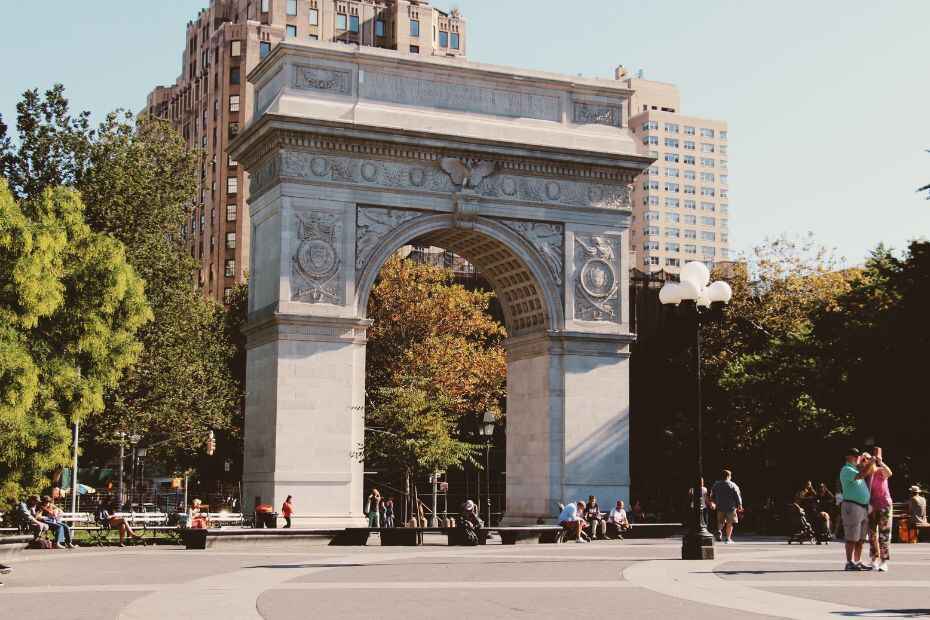
Learning as much as you can about the culture and history of the place you’re visiting will undoubtedly deepen your understanding and experience of it. A monument or a park might be pretty and fun to hang out in, but knowing that New York City’s Washington Square Park was built over the graves of 20,000 people makes for both an interesting angle and a more emotionally impactful piece.
Even if you want to write from the perspective of someone going into an experience blind, you still need to do research to travel anywhere — or you’ll end up writing a travelog where you barely find your way out of the airport parking lot.
While these are the main two skills you should focus on, there are a few more that can give you and your writing a boost.
Interviewing
A subset of research, learning how to interview effectively will broaden the scope of your knowledge and your writing. Sometimes, you need a perspective other than your own, and who better to tell you about all the hidden secrets of Barcelona than a local? It’s an invaluable skill — especially for a travel writer — to be able to go into a place and speak to people, to get their stories and perspectives so you can go beyond just being a tourist. It’s a way to pull back the curtain and really connect yourself and your reader with the wider world.
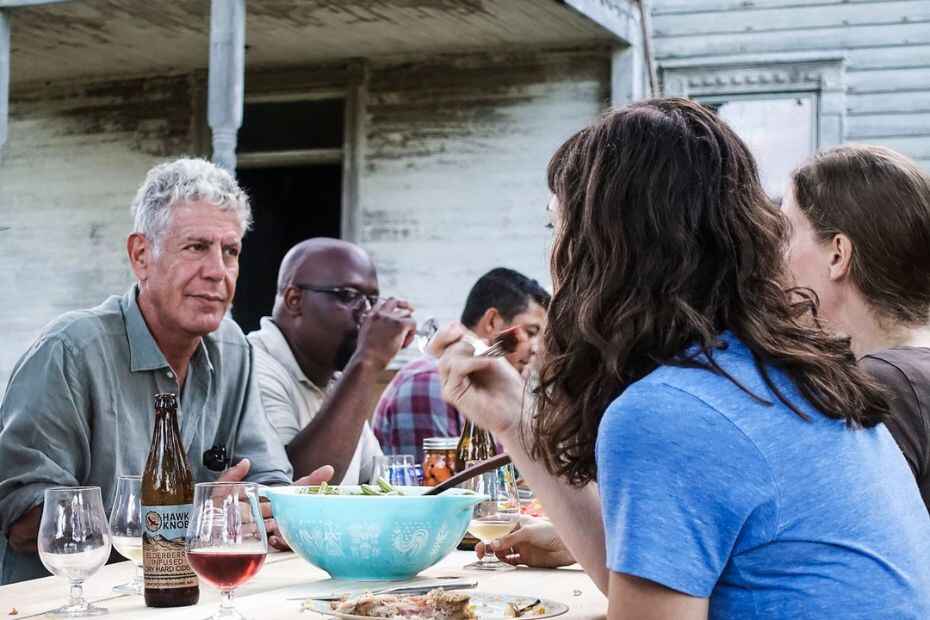
Travel writers do this quite often, and a great example can be seen in Anthony Bourdain’s TV show, Parts Unknown . On the surface, this food travel show showcases the cuisines of the world. But Bourdain’s interests, and thus the show’s, were much more focused on the lives of the people he’d meet along the way.
If you also want to write in a way that exceeds the usual ‘visit-here-and-eat-that’ humdrum of most so-called travel writing and really start to understand the people you’ll encounter, you’ll need to become a passable interviewer.
Finding people to interview, asking the right questions, and making your interviewee comfortable are the main things that go into conducting a successful interview. Before you go out into the wider world, you can practice with friends, but really, the best way to learn is by doing. Record your interviews or take notes to ensure you don’t forget anything and have quotes to use for when you write your story. And, of course, ask permission before you conduct the interview or use the material.
With your notes and quotes in order, you then need to do the hard part: figure out what’s relevant. You may have dozens of poignant quotes and conversations, but it’s inevitable that you’ll have more raw material than you’ll be able to use. There’s no one right way to make this judgment. It takes time, experimentation, and experience to figure which ones are the best and order them together into one coherent whole.
Stay up to date with the travel industry
While not necessarily a skill, part of being a good travel writer is being in the know about what’s happening in the travel industry. After all, the larger trends of people’s travel habits, popular destinations, and the state of major airlines and hotels influences the kind of information people are looking for. And it can always serve as inspiration for your next story. There are dozens of industry newsletters you can subscribe to that will keep you apprised of any new developments (including job openings and calls for pitches) in the world of travel, such as Lottie Gross’s Talking Travel Writing . Use them wisely.
Staying up to date is also knowing where the opportunities to monetize your writing lie. The travel industry is full of affiliate programs and content partnerships, where you can get paid for your work without having to sell it to a publisher or outlet. Your chances of landing these types of deals significantly increase if you have your own blog or social media accounts with a good amount of subscribers, but there may be other opportunities out there as well if you’re savvy.
Even travel writers who don’t consider themselves “influencers” can learn a lot from people creating video content relating to travel topics, especially when it comes to how to make a profit off their content. If you’re interested in running and making money off your own blog, knowing about programs like these and where to find them is incredibly important.
Whether you’re looking to get a brand partnership, pitch an online publication, or a guest post on a travel blog, learning the basics of search engine optimization (SEO) and applying it to your writing will help you as you search for opportunities. Essentially, SEO is about optimizing a web page — in this case, your article — to be read by a search engine and draw users to it. It’s no surprise, then, that many publications value writers who have SEO skills and can optimize their articles to bring more traffic to their website.
Learn to take good photos
Besides being a competent and compelling writer, there's another skill that you should look to hone: photography. As much as people enjoy reading about places they’ve never been to, descriptive writing and imagination can only go so far. When it comes to travel, a picture can truly speak more than a thousand words. And a video might be even better. Visual media adds extra color and context to your piece while complementing your writing.
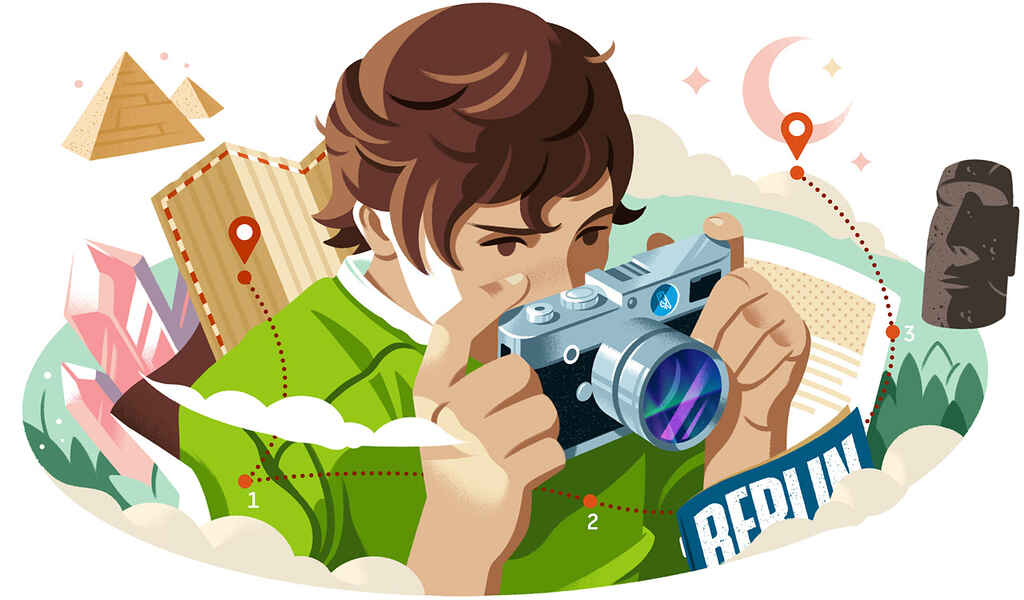
Depending on whether you’re freelancing or working full-time for a publication, you won’t always have a photographer following you on your journey. Learning the basics of photography can be helpful in those instances and make you a more well-rounded travel writer. In some cases, it might even be attractive to publications if you can provide your own photos. Consider posting what you capture on your personal blog, Instagram, or TikTok as well. Any way of building a following is great.
This doesn’t mean you must invest in a quality DSLR camera (though you certainly can). These days, many smartphones have top-of-the-line cameras that can take the kinds of stunning pictures of white sand beaches and ancient castles that readers are looking for. A beginner’s photography course can help you learn all the basics about lighting, color, and composition and have you snapping great shots in no time.
📸 Taking plenty of photos can also help you ace your descriptive writing, for those moments when you’re struggling to recall specific details about a place you visited.
Build a portfolio of work
Once you have a solid foundation of skills, you can begin creating your portfolio. While you might dream of being a staff writer at a travel publication, or make a living as a freelance travel writer, it’s unlikely that you’ll be able to jump straight into that role.
Find a niche you love
Unsurprisingly, travel writing is a popular choice for aspiring writers. Who doesn’t want to galavant around the world and make a living writing about your adventures? But, of course, that also means it’s a very competitive field, and standing out can be difficult. Finding a way to differentiate yourself will give you a leg up and provide a focus for your articles.
The great thing about travel writing is that there is a nearly never-ending number of niches you could devote yourself to. You can write exclusively about a certain country or area of the world or gear your work towards a specific audience, such as budget travelers, people traveling with family, or digital nomads. If you have a unique perspective, it’s likely that people will want to read about it.
That isn’t to say you can’t write outside your chosen subfield. Plenty of writers find success publishing in their niche and then expanding their reach to become a sort of jack of all trades. Having a focus will simply allow you to stand out from the crowd.
Collect some quality clips

First, you need to build up a reputation and a solid amount of quality clips — a journalistic term for published articles. They will serve as your resume, showing off your writing and research skills, as well as the topics you’re familiar with and your general style. As you start looking for ways to build your portfolio, internships, freelance opportunities, and blogging can all be great ways to start out.
💡If you’re curious about the many kinds of work travel writers can do, check out this post about the different types of travel writing .
📕And if you already have a travel writing blog, you might want to turn your blog into a book that you can pitch to publishers or self-publish.
Look for internships
Internships are a common way writers gain experience and clips. Magazines and online publications may allow aspiring travel writers to flex their skills and learn about what goes into professional travel writing. However, while there are paid internships in this field, many are likely unpaid. Whether you want to pursue an unpaid internship remains up to you, but we recommend valuing your time and pursuing paid internships when you can.
Consider freelance writing
Another option to consider is freelance writing . Pitching articles to travel publications will not only be a way to gain jobs and clippings but allows you to practice ideation and build up a personal brand, as you are entirely in charge of the topics you’re writing about. It also expands your network of contacts in the industry, which will help you as you continue to pitch magazines and might lead to a job somewhere down the road.

FREE RESOURCE
Writing Submissions Checklist
Make sure your magazine and contest submissions are prepped to impress.
And if you want to take complete control of your career, a subset of freelancing is blogging. Dozens of freelance travel writers supplement (or make a career out of) running their own personal blog. Having one will give you a ready-made portfolio of clips showing off your skills. This is where having a niche can be especially helpful, as it’s a way to set you apart from all the other travel blogs on the Internet.
Search for jobs and writing opportunities
With a solid portfolio of clips, it’s time to go out into the world and fully devote yourself to a career in travel writing. There are two main tracks you could take: finding a staff writer position at a magazine or becoming a freelance travel writer.
Finding full-time travel writer jobs

For many writers, the dream is to work full-time as a travel writer for a publication. It offers stability while letting you travel to different destinations to write and explore.
Although there are many travel-focused magazines like Conde Nast Traveler and Travel + Leisure that might have staff writer positions, don’t discount other publications. Some magazines and newspapers with completely different focuses have travel sections that need staff writers to keep them running.
For positions like this, a portfolio is especially important. Magazines want to see that writers have a background in journalism and are reliable writers who can deliver good-quality pieces on time. Previously being published is often proof of that. But part of building a portfolio is also building connections with people in the industry. Knowing someone at a magazine who is familiar with your work and can vouch for you can help you get your foot in the door and be hired as a staff writer.
Freelancing
Another option is to continue down the freelance path, pitching and writing your own stories. This route gives you a lot more freedom. You can decide which places to visit and which activities you want to do, and you’re always in charge of your own itinerary. Overall, you’re much less likely to work on a story you’re not interested in because an editor told you you must.
This is where picking a niche and having a blog can be especially helpful. Establishing yourself as an authority on a subject will draw people to your articles and give you credibility as you pitch publications. A website dedicated to your niche, with all your expertise located in one place, elevates your credibility and provides a useful resource for your readers — especially if you get a handle on SEO. Eventually, you can even turn your blog into a book and create another revenue stream.
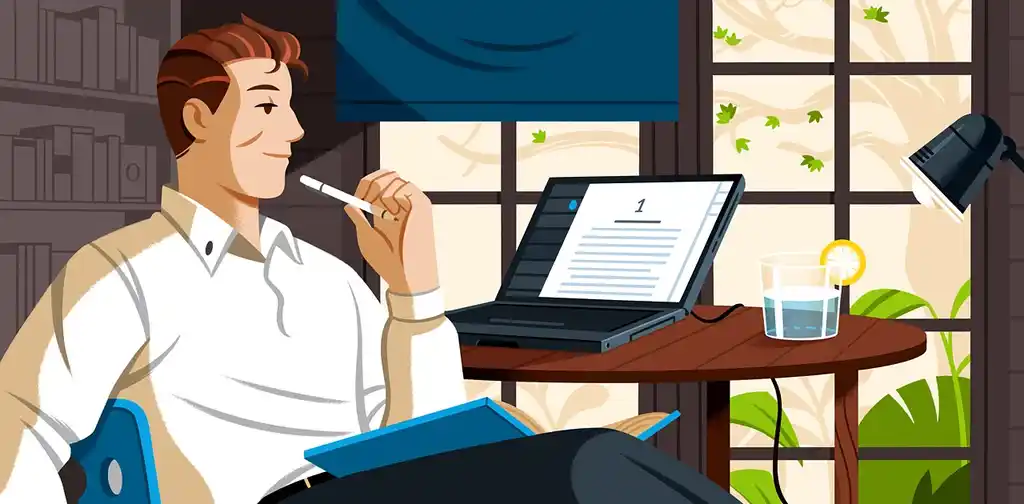
The Full-Time Freelancer's Checklist
Get our guide to financial and logistical planning. Then, claim your independence.
Travel writing allows you to indulge in and subsidize your wanderlust and make a living off of it. More than that though, travel writing is a way to connect people across cultures and great distances, and build an appreciation for the uniqueness and diversity around us.
Continue reading
Recommended posts from the Reedsy Blog

Man vs Nature: The Most Compelling Conflict in Writing
What is man vs nature? Learn all about this timeless conflict with examples of man vs nature in books, television, and film.

The Redemption Arc: Definition, Examples, and Writing Tips
Learn what it takes to redeem a character with these examples and writing tips.

How Many Sentences Are in a Paragraph?
From fiction to nonfiction works, the length of a paragraph varies depending on its purpose. Here's everything you need to know.

Narrative Structure: Definition, Examples, and Writing Tips
What's the difference between story structure and narrative structure? And how do you choose the right narrative structure for you novel?

What is the Proust Questionnaire? 22 Questions to Write Better Characters
Inspired by Marcel Proust, check out the questionnaire that will help your characters remember things past.

What is Pathos? Definition and Examples in Literature
Pathos is a literary device that uses language to evoke an emotional response, typically to connect readers with the characters in a story.
Join a community of over 1 million authors
Reedsy is more than just a blog. Become a member today to discover how we can help you publish a beautiful book.

We made a writing app for you
Yes, you! Write. Format. Export for ebook and print. 100% free, always.

1 million authors trust the professionals on Reedsy. Come meet them.
Enter your email or get started with a social account:

Birds of a Feather
For Travel Writers with an Independent Spirit
Develop your Travel Writing Style: Tone and Author Avatars

Writing your Travel Guide
The core part of travel writing in guidebooks is straightforward, informative, and full of facts and details. But it doesn’t end there. You can also include anecdotes or travel narrative sections that will help your reader connect to the destination you’re writing about.
If you’re new to travel blogging, you might not have settled on a writing style yet, but the more you write, the more your natural writing style will evolve and develop.
There are many elements to consider when defining your personal writing style. As you read through these, you’ll recognize some you’d be comfortable adopting, and others that would just feel alien to you.
The key to choosing your writing style is that it feels natural and effortless. As soon as you try to force a writing style that isn’t you, you’ll run into issues.
What tone do you want to convey? Friendly, reserved, humorous, serious, scholarly, sarcastic, conspiratorial, logical, emotional, intimate, or opinionated?

In a similar vein to Rick Steves, I use a friendly and approachable tone in my travel guides, as if I was sharing a conversation with a traveling buddy.
If you are just starting out as a travel writer, the easiest approach is to imagine you’re discussing your trip with a close friend. This will most likely be the writing tone that comes most naturally to you as you’re already using it every day. During the editing phase you’ll tighten up your text to cut extra words, but for your first draft, just capture your ideas using a tone you’re comfortable with.
As you become a more experienced writer, you’ll gain the confidence to experiment with different writing tones. But make sure you can maintain the same tone throughout your travel guide.
Questions to ask yourself
- Is your tone appropriate for your subject? (For example, a glib writing style for a serious topic wouldn’t go down very well.)
- Will your tone appeal to the audience? (For example, a 20-year-old backpacker partying their way around the world on a budget will gravitate towards a different tone than an empty-nester looking to experience the religious and cultural heritage of a destination.)
If you answered “No” to either of these questions, it’s time to reevaluate the tone, or change the other elements of your book. Basically, you need to make sure that all of your vocabulary, sentence structure, and content tone all work in harmony with your target audience in mind.
Create an Author Avatar

If you’re struggling to define your tone, try applying a label to your author role. Here are a few author avatar examples to trigger your imagination. Adapt these to suit your writing tone and level of detail, or create one from scratch:
Author as the Educator:
- share your expertise and experiences using your in-depth knowledge of the topic. Focus on facts and figures and less on narratives.
Author as the Reporter:
- share details and different points of view using an investigative approach. Focus on connecting with the destination through a series of interviews, presented using an objective point of view.
Author as the Story Teller:
- share personal anecdotes throughout your text to illustrate key destinations, sights, and experiences. You’ll include basic information, but want your readers to research the full details themselves.
Author as the Explorer:
- share your experiences with a been there and done that approach. Focus on sharing narratives to personalize travel experiences, but you’ll also include essential information.
Creating a consistent tone throughout your book will give it an easy flow that will lull your reader with its familiarity.
As soon as you’ve labeled your intent, it’s easier to settle on the tone and vocabulary that aligns with your author avatar. You can combine your avatar personalities to create an interesting mix of content that will keep your readers on their toes.
Click here for my A-Z of Travel Writing Tips
Read more articles in my how to write a travel guide series.
I’m putting the finishing touches on my How to Write and Self-Publish a Travel Guide Series , which details a step by step approach for writing and producing your own travel guide. It’s part of a four-part series aimed at helping travel bloggers achieve passive income based on their passions and existing content.

Each month I host a monthly free prize draw and give away a travel writing e-book to the lucky winner. Sign up to join my mailing list to participate.
Author: Jay Artale
Leave a reply cancel reply.
Your email address will not be published. Required fields are marked *
Notify me of follow-up comments by email.
Notify me of new posts by email.

I abandoned my corporate career to become a digital nomad and full-time writer, and now run Birds of a Feather Press to help other writers become authors. I also write about my travels on my personal blog Roving Jay: Nomadic Adventures in Wonderland – without the rose-tinted glasses
Grab this month’s Free Download

Listen to our Podcast

Featured In

Romancing the Genres
- Author Interviews (73)
- Author Resources (28)
- Book Design (44)
- Book Marketing & Promotion (52)
- Book Production (48)
- Book Reviews (1)
- Guest Blogging Tips (7)
- Travel Blog Advice (4)
- Podcast: How Travel Writers Self-Publish (42)
- Self-Publishing Advice (98)
- The Nomadic Times (30)
- Uncategorized (9)
- A-Z Travel Writing Tips (13)
- Writing Tools (38)
Recent Articles
- 10 Amazing Trends For Book Cover Design
- Author Interview with traveloguer Kandy Ostrosky
- Free Self-Publishing Advice from Amazon KDP
- Back after Hiatus
- 5 Tips for Writing a Travel Journal to turn into a Book
Recommended Distributors

Explore our Book Series

Content Tags
Disclaimer:.
The information on this site is free for you to read, watch and listen to, but Birds of a Feather Press is also a business. Some of the links in this post are affiliate links. I receive a small percentage of the sales income if you decide to purchase through them, and this doesn’t cost you a penny. I only recommend products I use or people I trust. I blog with integrity, and only belong to affiliate programs I believe in.
Follow me on Twitter
Join us on Facebook
Latest From:: ROVING JAY
Day 21-30 of the 100 day project.

How to Write a Perfect Travel Guide From Home
For many aspiring bloggers, writing about travel seems daunting because they don’t yet have extensive travel experiences. However, lots of travel experience is not necessary, as today one can easily make a travel guide from the comfort of their home. In this post, we’ll define what is a travel guide book or travel post, what sections you should include, and how to monetize your guide with affiliate links.
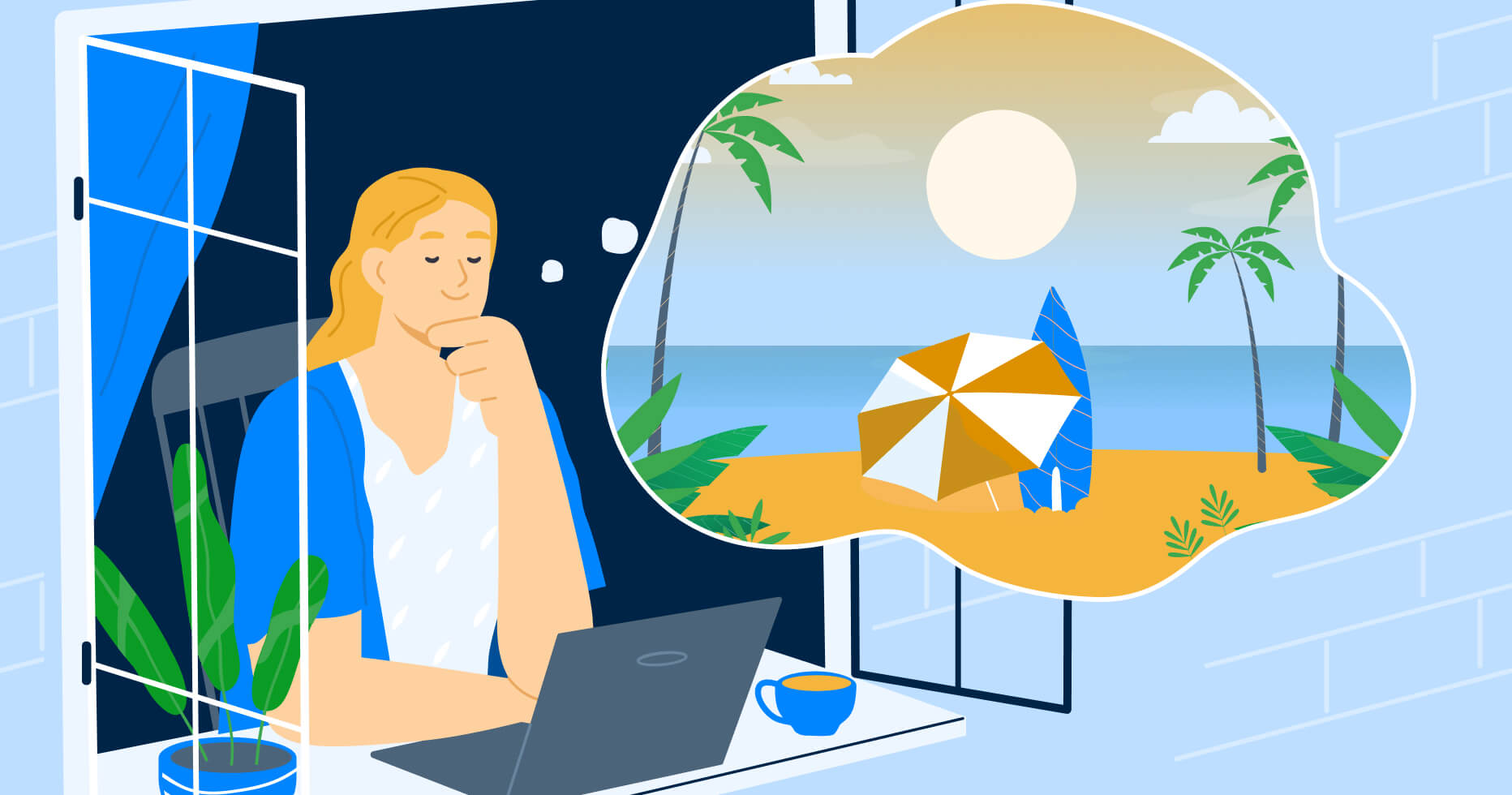
To monetize the travel guide using partner links, join the Travelpayouts partnership platform . Here you can find the travel affiliate programs of many popular travel brands, such as Booking.com, TripAdvisor, GetYourGuide, etc.
By promoting travel brands, you help your audience save money on travel and, as a result, travel more. In addition, you can turn your hobby into income. Signing up only takes a couple of minutes and you can start integrating partner link in relevant pages of your guide. You’ll earn every time a user follows your link and purchases a service.
Monetize your project with Travelpayouts, embark on a new journey, and create inspiring content for your audience.
Join the Travelpayouts Partnership Platform
Access exclusive tools and the best travel partner programs, including flights, hotels, car rental, insurance, tours and activities, all in one place.
Can You Write a Travel Guide From Home?
Naturally, writing travel guides based on your own experiences and illustrating them with your own photos is much easier and more authentic than writing about a destination you have never visited, although it is not always possible or even necessary to do so. With such a large selection of travel posts on the Internet today, you can easily create a detailed travel blog without ever leaving your home.
In this article, we’ve prepared some travel guide writing tips and a template to help you create useful blog materials. To make your posts even more appealing, explore travel guides created by locals who have a deep knowledge of your selected destination. Of course, be sure to double-check all the information that you share.
Choose a Destination
The first step towards writing a travel guide is selecting a destination. You may choose any location from the world’s most-visited cities, such as New York or Paris, to small idyllic villages. Just remember that your writing will largely depend on this initial choice. As there are already tons of guides about popular destinations, you’ll probably have to find a fresh perspective to make your materials stand out. When it comes to lesser-known spots, it will likely be easier to draw the attention of your audience.
While writing a guidebook, make sure to check with locals who know your destination inside out and can share invaluable advice. Try to connect with them through platforms such as CouchSurfing.org or Facebook.com . Ask them questions or ask them to check over your guide.
Use Travel Guide Structure
While the style of travel guides varies widely, most of them have a similar structure, which consists of tips on transportation, accommodation, tours, activities, popular sites, travel costs, and so on. Make sure to include these sections in your article so that it presents all the information that readers are looking for.
1. How to Get There
Normally, travel guides present several options for getting to each destination, including which cities are nearby, which modes of transportation are available, and the price of those transportation options.
Also, you can offer some tips and tricks on how to plan a trip more efficiently. For example, in some cases, it’s cheaper to take a plane, while, in other cases, ground transportation is a better option. You can also share some money-saving tricks.
2. Accommodations
Today, there are plenty of ways to arrange accommodations in any destination. You can start by suggesting a hotel or hostel via Booking.com , which many tourists are familiar with or have already used. You can then offer to rent places to stay with locals through platforms like Airbnb or HomeAway .
At this point, you can also offer tricks to save money. In some popular locations, such as Barcelona, it is usually cheaper to rent accommodations in the nearest town instead of within the city itself, while, in other destinations, like Paris, choosing the right town while avoiding marginalized areas can be far trickier. Be sure to carefully research the destination and offer valuable advice.
3. Tours and Attractions
After learning about their transportation and accommodation options and costs, tourists will want to explore their destination’s sights and entertainment opportunities. In this section, you can create a list of attractions to visit and excursions that will make sightseeing more exciting. Include options from walking tours to bus excursions to boat trips. For inspiration, look through the Experiences section on Airbnb.com .
4. Getting Around
Another important topic to cover is transportation options within the destination. For example, the first thing travelers would like to know is how to get from the airport/railway/bus station to the city center. There are usually dozens of transportation methods and the price differences between them can be massive, so your readers will appreciate such advice.
It is also important to describe different methods of getting from the transportation hubs to the main attractions while offering options to save a few bucks. In this section, it might be a great idea to ask locals to share tricks. For example, in Lisbon, taxis are often the same price as public transportation or lower.
5. Travel Costs
This is one of the most important parts of any travel guide, as travel costs greatly influence booking intent. Thus, you should briefly cover the prices of flight tickets, accommodations, tours, food and drink options, public transport insurance, and other relevant travel products. Also, for budget travelers, provide tips on how to save money or find the best value.
6. Staying Safe
In this section, you can cover concerns that tourists might have about security. Different cities and areas have different regulations and concerns, so make sure to do the proper research and possibly even ask locals for advice.
So, which questions and concerns should you cover? Consider topics like: where to park a car or exchange money, what areas are best to avoid, are there many pickpockets, and so on.
7. Best Time to Visit
Each destination offers different experiences to travelers at different times of the year. For example, Japan is famous for its cherry blossoms, so it’s worth mentioning the best time to catch them in bloom. European destinations are especially beautiful during the winter holidays thanks to their abundance of Christmas markets and celebrations.
You can recommend the best season to visit each place or offer specific advice for different times of the year.
8. Food and Drinks
In this section, you can describe features of the local cuisine and recommend popular dishes. Then, suggest specific restaurants, markets, or shops with high ratings and positive reviews. To get inspired, check Google Maps , TripAdvisor , or Instagram .
It’s worth mentioning food markets, as they usually have local treats and a wide variety of products at low prices, such as La Boqueria in Barcelona.
How to Write a Travel Guide: Best Practices
Below, you’ll find the best practices for travel writing that will help you make your guides appealing, valuable, and easy to monetize.
1. Add Pictures
Using schemes or images for travel guides is beneficial for many reasons. Posts with pictures receive over 90% more views than ones with plain text. Images help break posts into small parts and make them easier to digest. Readers retain more information and remain interested for a longer time if the text is paired with an image. In addition, 90% of the information that the brain receives is from visual cues.
Thus, make sure to illustrate your post with a few appealing photos to help the audience get inspired. You can also add maps or schemes so that readers can better navigate in the destination, as well as other image types to make the content more illustrative and versatile.
Where to find photos? You can buy photos at photo banks or download free stock images . Moreover, if you stumble upon a nice picture on social media, consider contacting its owner and ask for permission to use it on your site. Another option is to download a stock photo and edit it with one of the free design apps to make it look original. In any case, try choosing only high-quality, unique photos to make your blog look professional.
2. Research Keywords
Keywords are important in terms of website promotion. If you want to drive more traffic from search engines, be sure to run keyword research for your niche . To automate the process, try dedicated tools like Google Keyword Planner and Keywordtool.io (free tools) or SEMrush and Ahrefs (paid programs).
Then, it’s equally important to use keywords properly . That is, find the best placement within the text so that they attract attention and help navigate the text. Also, follow keyword density best practices so that your post doesn’t look spammy. And try to use keyword variations to enrich the text and drive more traffic.
Keywords differ widely: they can be short-tail or long-tail, short-term or long-term, high volume or low volume, geo-targeting, LSI, and more. Some keywords have higher competition, such as short-tail, high-volume keywords, thus aspiring bloggers might find it extremely difficult to compete with established sites. You can start with long-tail keywords and then work your way through the other types as you go.
More practical tips about SEO, including finding and using keywords, can be found in the free SEO course from Travelpayouts and Sharon Gourlay. Watch one lesson from the “Boost Travel Affiliate Revenue Using SEO” course to find out how many keywords you should use in your articles and how to search for them easily and quickly.
All Travelpayouts Academy courses are free for everyone. So feel free to view all the lessons that will help you increase your income.
3. Place Affiliate Tools
When writing a travel guide, don’t forget to insert an affiliate link, widget, banner, or other tools . This can help you monetize your guide and increase your ranking in the SERPs.
The most important thing is to add only relevant tools. For example, when describing sights, add a link to a tours and activities platform, such as Expedia or Musement, so that readers can book an excursion immediately. In the accommodations section, you can link to Booking.com, HomeAway, etc. Such an approach helps your readers easily find a solution to their problem or an answer to their question while generating additional income for you.
We recently published a more detailed guide on using affiliate links on our blog.
4. Choose the Right Format
There are plenty of formats available for travel guides. You can choose to make a post on your blog, a PDF guide, an eBook, and the list goes on.
If you plan on writing multiple guides for your blog, it makes sense to create a separate section and publish all the guides there. You can also create subsections for each country to facilitate better navigation.
To get more leads, you can even create city guides in PDF format and offer to send them for free in exchange for a users’ email address. This could help you grow the number of your subscribers.
If you are writing a travel guide covering multiple destinations, consider adding a table of contents so that readers can easily navigate.
Travel Guide Examples
It might be a good idea to find inspiration before you start writing. Check out a few travel blogs and if you like the structure, perspective, etc., why not adopt those elements for your blog and audience?
Here are a few good travel blogs to check out:
- AGAINSTtheCOMPASS
- Lost With Purpose
- THE Blonde ABROAD
- ROADS&KINGDOMS
- NOMADIC MAT
Also, be sure to check our list of the top travel blogs to follow in 2020 for more inspiration.
How to Create Online Travel Guides
You don’t need extensive travel experience to create your own travel guidebook or series of travel posts. Start by choosing a destination that will be interesting to your audience, think about the structure of your guide and the various aspects of travel, and perhaps ask locals for additional tips. Also, don’t forget to choose the right format, fill your text with keywords to reach a larger audience, and insert affiliate tools to start earning money immediately.
- International
- Schools directory
- Resources Jobs Schools directory News Search

Travel Writing & Text Types - Complete Unit Bundle - 2024 (135 + slides / LAP & EAL Scheme)
Last updated
22 April 2024
- Share through email
- Share through twitter
- Share through linkedin
- Share through facebook
- Share through pinterest
Resources included (5)

Travel Writing - Journal Writing - 2024 (LAP / EAL - 25 page booklet + lesson)

Travel Writing - Blog Writing - 2024 (LAP / EAL - 27 page booklet + lesson)

Travel Writing - Diary Writing - 2024 (LAP / EAL - 31 page booklet + lesson)

Travel Writing - Writing a Review - 2024 (LAP / EAL - 25 page booklet + lesson)

Travel Writing - Introduction - 2024 (LAP / EAL - 25 page booklet + lesson)
Unlock the World of Travel Writing: A Comprehensive Bundle for Classroom Use – Available Exclusively on TES - 2024
Dive into the exciting realm of travel writing with our all-encompassing bundle, designed to engage and inspire KS3 students. This bundle comprises five meticulously crafted weekly units, each focusing on a unique aspect of travel writing, from diary and blog writing to crafting detailed reviews and journal entries. With this bundle, educators are equipped to enhance students’ writing skills, broaden their vocabulary, and deepen their understanding of personal and descriptive narratives.
What does the bundle include?
Travel Writing - Introduction (2024 Release): Kickstart your students’ adventure with a foundational lesson on travel writing, combining interactive speaking tasks, creative writing exercises, and vocabulary expansion. This lesson challenges students to explore various travel tales and the art of persuasive speaking.
Travel Writing - Writing a Review: Elevate students’ abilities to articulate travel experiences with precision. This lesson focuses on understanding the structure and importance of reviews, boosting analytical skills through hands-on review writing tasks.
Travel Writing - Diary Writing: Introduce students to the introspective world of diary writing. They will learn to document their personal travel experiences, enhancing their emotional intelligence and descriptive writing skills.
Travel Writing - Blog: Engage with the digital age through our travel blogging lesson. Students will learn about blog structure, content creation, and audience engagement, perfect for those interested in modern storytelling techniques.
Travel Writing - Journal Writing: Explore memory and reflection through journal writing. This lesson emphasizes personal growth and creativity, helping students craft a lasting memento of their journeys.
Why this bundle?
Comprehensive Skill Development: From critical thinking and research to creative expression and digital literacy, these lessons cover a wide range of skills.
Interactive and Engaging: A mix of group and individual activities ensures that all types of learners are catered to, making learning both fun and effective.
Classroom Ready: Each lesson includes all necessary materials for immediate implementation, saving educators time and effort.
Cultural and Personal Awareness: Encourages students to explore diverse cultures and introspect on personal experiences, fostering global awareness and self-reflection.
Perfect for: Educators looking to provide a dynamic, engaging, and educational experience in English and creative writing classes.
Visit our TES store today to download this travel writing bundle and start inspiring your young explorers with the power of words. Happy teaching!
Find more resources like this on my store: Mr. Mac’s resource packs! <3
Tes paid licence How can I reuse this?
Your rating is required to reflect your happiness.
It's good to leave some feedback.
Something went wrong, please try again later.
This resource hasn't been reviewed yet
To ensure quality for our reviews, only customers who have purchased this resource can review it
Report this resource to let us know if it violates our terms and conditions. Our customer service team will review your report and will be in touch.
Not quite what you were looking for? Search by keyword to find the right resource:
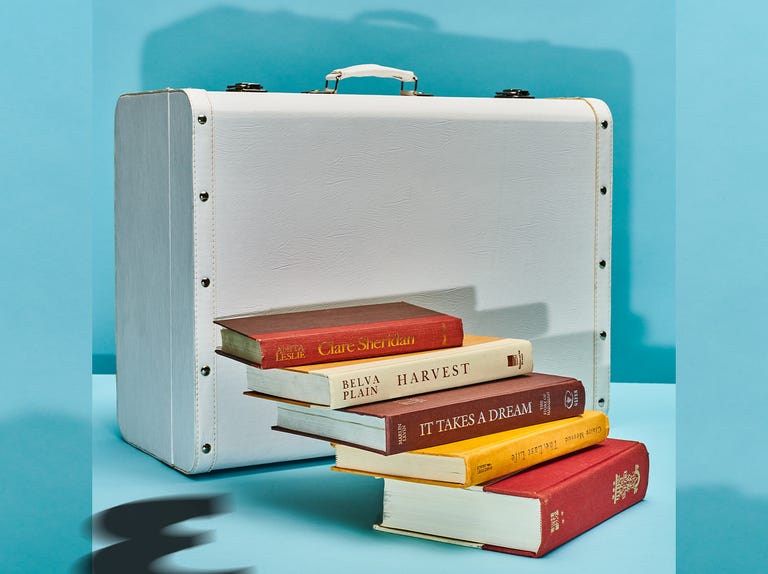
Inside the Literary Travel Boom
Book butlers! Curated libraries! Custom cruises! Literary-themed vacations are the hot new trend in tourism.
In January, when packing my bags for a “reading retreat” in the Dominican Republic, I agonized about which books to bring. A few days later, bellied up to the beachside bar at the all-inclusive Dreams Macao Beach Punta Cana resort (where, in place of barstools, swings are suspended from the thatched ceiling), I sipped a mojito, cracked open James Salter’s Light Years, a novel I reread annually, and knew that I’d chosen well.
But if I’d had any regrets, summoning a new paperback would’ve been as easy as ringing for a book butler. I was down in the DR to experience Pages in Paradise, a collaboration between the publisher Penguin Random House, Belletrist Book Club (the brainchild of actress Emma Roberts), and Apple Vacations (no relation to the iPhone maker). For readers who like to beach, the retreat left no page unturned. The programming kicked off even before check-in: Ahead of arrival, guests could log in to the resort’s app to reserve beach reads from an on-site library curated by Belletrist. Housed in the airy hotel lobby, the collection included buzzy contemporary fiction by the likes of Zadie Smith and Curtis Sittenfeld. Guests could also order books via room service (or personal butler) anytime or select one from the chic library carts located at the adults-only pool. The property’s various bars featured the “Pages Pour,” a specialty cocktail themed to the program’s inaugural book-of-the-month selection, Jenny Xie’s debut novel, Holding Pattern . They called the drink a gin-fashioned—a fruit-forward riff on the old-fashioned, zippy with pineapple-cinnamon syrup.

Exotic as this tropical gathering of book lovers might have been, it’s just one example of a fast-growing business trend: literary-themed travel. We have the pandemic to thank. Reading surged in the early days of Covid, and the habit stuck as lockdowns eased: The biggest two years on record for print book sales in the U.S. were 2021 and 2022. Hotels and tourism companies, eager to lure back travelers, seized on the surge and began featuring books in their marketing. What began as a travel perk has become a full-blown movement to cater to readers with an explosion of new programming, from big-ticket experiences promising author access to solitary retreats. I know, I know—planning a trip around your reading list may never replace your annual golf weekend, but when else will you get the time to actually enjoy that stack on your nightstand? And if it all sounds like giving yourself homework, don’t worry—there definitely won’t be a quiz, and did I mention the drinks?
As a professional book recommender, the question I’m asked most often is “What book should I bring on my vacation?” But now there’s a new question to consider: What kind of literary vacation should I plan?
Not every reader is content to lie by the pool and read for days on end. Some are looking for a more kinetic experience—one that lets them interact with fellow readers, and even their favorite writers. Enter the “ Gone Girl cruise.” In fall 2022, author Gillian Flynn set sail down the Danube with some of her biggest (and most well-heeled) fans as part of Avalon Waterways’ Storyteller Series, cruises that offer literary travelers a chance to voyage in close quarters with authors and other storytellers. When Flynn tweeted about the cruise, it quickly became a viral sensation. On-board accounts detailed a true-crime extravaganza, with guests returning to their rooms each night to discover blood-spattered notes, themed to Flynn’s novels, on their pillows. Sure, it’s a little dorky—but we’re all fans of something, and if crime novels are your thing, what could be better?
For readers who can’t splash out for getaways abroad, there are literary destinations closer to home, too. In the artsy hamlet of New Hope, Pennsylvania, the historic luxury hotel River House at Odette’s offers Riverside Reading (in partnership with Bedside Reading), a program that pairs complimentary access to a curated library (via digital app or hard copies throughout the hotel) with intimate author experiences. With bookshelves stationed on each floor and authors rolling through seasonally, guests can dip in and out of the programming as they please.
When I visited River House deep in the grips of a harsh Pennsylvania winter, I discovered a reader’s paradise: My room boasted a fireplace, a private balcony, and serene views of the rushing Delaware River. After turndown service, I found a keepsake leather bookmark on my pillow. That evening, a few dozen guests gathered for a talkback with the novelist Jean Hanff Korelitz. In a ballroom festooned with red carnations (a nod to the cover of her latest book, The Latecomers ), Korelitz fielded rapid-fire questions about her inspiration, her writing process, and her hit novel The Plot . After the formal conversation concluded, starstruck guests crowded around her at the bar. “When people come up to you and say, ‘I loved your book,’ that really means something to writers,” Korelitz told me. As the owner of BookTheWriter, a service connecting authors and readers through pop-up book clubs hosted in New York City apartments, Korelitz knows a thing or two about making connections. In the recent boom of literary travel experiences, she sees a broader post-pandemic trend of readers craving the chance to get up close and personal with their favorite writers. “The ways of access to authors have multiplied exponentially,” she said. “I find it to be very inspiring.”
For an early-career author like Xie, who was at Pages in Paradise, seeing her novel highlighted was both exciting and transformative. That’s the thing about literary travel—it allows us to transcend our ordinary lives in more ways than one. “There’s a certain sense that we don’t have the space to read unless we’re traveling or living outside of our day-to-day,” said Xie. “A book takes you outside of your physical environment and your lived experience. Travel does that, too, so they join together in this really beautiful way to truly transport you.” That’s a journey worth taking.
HOW TO PLAN YOUR OWN LITERARY VACATION
Ready to take off on a bookish getaway? Literary travel isn’t “one size fits all,” so whatever type of reader you are, we’ve got a prescription for it. Choose your own adventure below.
For the fan
The Gone Girl cruise is over, but Avalon Waterways isn’t slowing down anytime soon: Its upcoming slate of Storyteller Cruises includes actor Graham McTavish (sailing down the Rhine River) and Outlander phenom Diana Gabaldon (voyaging down the Danube).
For the R&R chaser
Looking for a more relaxed experience? At the Reeds at Shelter Haven, an upscale resort on the Jersey shore, guests can participate in Reeds’ Reads, a seasonal book club featuring guided discussions, with authors sometimes joining via Zoom for Q&A sessions.
For the aspiring writer
Chances are, your favorite author is side-hustling by leading retreats in pastoral Europe. To get in on the action, pay close attention to their social-media feeds, or search for guided trips through an experiential-tourism outlet like TrovaTrip.

@media(max-width: 73.75rem){.css-1ktbcds:before{margin-right:0.4375rem;color:#FF3A30;content:'_';display:inline-block;}}@media(min-width: 64rem){.css-1ktbcds:before{margin-right:0.5625rem;color:#FF3A30;content:'_';display:inline-block;}} Esquire Travels

The Best New Hotels in the World 2024
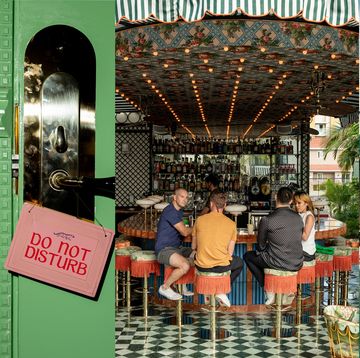
The Lafayette Is Our 2024 New Hotel of the Year
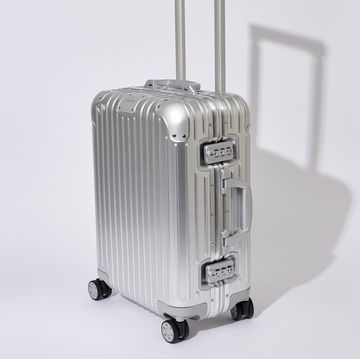
Why the Expensive Suitcase Reigns Supreme

The 6 Best New Hotels in Charleston
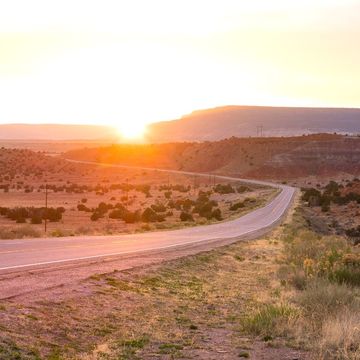
The Tiniest Town in Every State

Inside NYC's Most Expensive Hotel
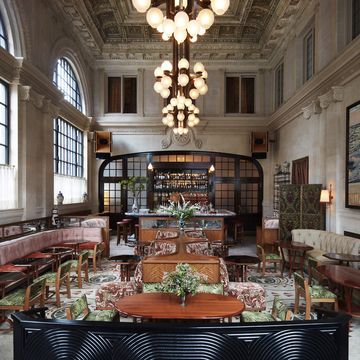
Nine Orchard Is Our 2023 New Hotel of the Year

Las Ventanas al Paraíso, A Rosewood Resort Review

Our Favorite Hotels of All Time

The Best New Hotels in North America and Beyond
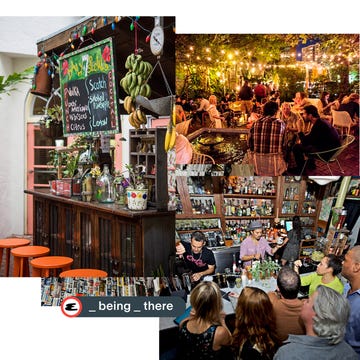
Welcome to Miami’s Most Non-Miami Bar

How to Write an Ebook in 30 Days: A Step-by-Step Guide
A re you interested in writing an ebook but are intimidated by the process? Maybe you want to write but are worried that it will take you months or even years to finish your book.
While writing an ebook in 30 days isn't practical for everyone, it's definitely possible with the right tools and motivation. This article will introduce a plan for how to write an ebook in 30 days, with the preparation, editing, and formatting accounted for separately to better your chances of success.
Can I Write an Ebook in 30 Days?
Writing an ebook is simple enough, but writing one in 30 days is a different story. If you make it a goal to write your ebook in 30 days during the month of November, you can participate in the National Novel Writing Month (NaNoWriMo) event.
What Is the NaNoWriMo Event?
NaNoWriMo is a worldwide event that takes place every November. Participants around the world set a goal to write at least 50k words from November 1st to the 30th (this equals 1,666 words per day). There are a lot of incentives to participate in NaNoWriMo, including local events, workshops, merch, fun badges you can earn, and more.
There are many popular books that started out as NaNoWriMo books, including the smash hit Legends and Lattes by Travis Baldree . Writing your book during NaNoWriMo can give you that push you need to finish quickly, so you can publish your book in a reasonable amount of time.
If we're being honest, it's pretty difficult to produce a quality body of work that will be ready for publication in 30 days. But if you break up your book into different phases, you can make the process less intimidating.
- Planning: Two to four weeks
- Writing: 1,666 words per day for 30 days (50k words total)
- Editing and Formatting: Two to six months
- Release & Promotion: Two to four months
Phase 1: Planning Your Ebook
If you want to succeed at writing a book in 30 days, spend a few weeks planning your book beforehand. There are a lot of things you can plan in advance, including the plot, chapters, and character development. You can also think about what extra features you'd like to add to your ebook , including a map, index, glossary, or foreword.
There are several tools you can use to put together a thorough plan for your book.
Pinterest is a fantastic place to get some visual inspiration for your novel. Make boards for the scenery, different characters, and whatever you feel like. While writing your book, you can refer to your Pinterest board for ideas and inspiration.
If you want to plan out scenes, timelines, etc., Notion is a great place to get organized. Notion is highly customizable and powerful, meaning you can craft intricate worlds and complex characters, all while keeping the information easily accessible.
Like many writers, you may feel dubious about using ChatGPT to help you write a novel . However, if used as a tool instead of a ghostwriter, ChatGPT is great for inspiration. Try these ChatGPT prompts to help you develop book characters .
Campfire is a planning and world-building software divided into different modules for accessibility. If you find software like Notion too daunting and prefer something that has guided prompts, Campfire could be a good choice for you.
Phase 2: Writing Your Ugly First Draft
Now that you've got your book planned out, you can focus on writing for the next 30 days. If you're writing during November for NaNoWriMo, you shouldn't have too much trouble with staying motivated and on target. You can also participate in Camp NaNoWriMo during the months of April and July.
If you're writing during any of the other months, here are some tips to help you hit your goal:
- Create a daily word goal. Between 1000 and 3000 words is ideal.
- Set your intentions before each writing session; what scenes are you going to write?
- Join an online writing community for support.
- Try an online "work gym" to help you stay focused during writing.
- Take care to avoid getting distracted while writing on your computer.
- Read an inspirational book like "On Writing" by Stephen King to pump you up for the task ahead.
Choose Your Software
There are many different software you can use to write your book . Scrivener is a popular choice for writers, and as a bonus, NaNoWriMo participants can receive a 20% discount—create a NaNoWriMo account and then click My Offers from the homepage.
Other popular software include Ulysses , Notion, and of course, old standbys like Google Docs and Microsoft Word.
Before splurging on software, see if it offers a free trial, so you can try it before you buy. You can also watch tutorials on YouTube to see if the UI looks appealing and easy to understand.
Once you find software you like, you can focus on writing your "ugly first draft" over the next 30 days.
What Is the Ugly First Draft?
In writing, many people refer to the "ugly first draft" as a means of writing quickly at the expense of spelling, grammar, and formatting. Think of it like a sculptor working with clay: first they create the shape, then they carve out the fine details later.
Writers will often engage in writing sprints where they attempt to write as much as possible during a specific amount of time. During these sprints, writers can't really afford to be "pretty" with their writing. It's more of a stream-of-consciousness way of writing that, while messy, gets the job done fast.
If you make a habit of doing writing sprints every day with the ugly first draft in mind, you'll have plenty of material for your book before you know it. Just make sure the writing makes sense to you, so you'll have an easier time editing it in the next phase.
Sit Down and Write
If you've thoroughly planned out your book in advance, have your software of choice, and are ready to write messily, all you need to do now is sit down and write. Of course, this is easier said than done, but remember that writing something bad is better than writing nothing at all.
Try to plan out a schedule for the next 30 days to help you stay on track. Schedule at least one or two reading sprints every day to make sure you hit your 1666-word goal. If you miss a day, you'll need to make up the word count on a different day so that you don't fall behind.
Very few writers can write 1666 words every day for 30 days straight without a hitch. There are going to be setbacks; you might get busy with other things, have writer's block, or simply not feel like writing that day. Therefore, set a cushion for yourself.
If you write 3000 words one day, don't take it easy the next day just because you're "ahead" of your goal. Aim to write every day even if you crushed it the day before. That way, when the chips are down and you're actually struggling, you'll have a bit of wiggle room.
Phase 3: Editing and Formatting
If you finished writing your first draft, congratulations! You're over one of the biggest hurdles of writing an ebook in 30 days. Now comes what is possibly the largest hurdle: writing the final draft and editing your book.
Though many books have been written during NaNoWriMo, very few get published as-is. Whether you want to edit the book yourself, hire a professional editor, or participate in peer editing, it's going to take a significant amount of time.
You'll also need to spend some time formatting your ebook for publication. You'll want to make sure it looks good on a variety of devices, including Kindles, phones, and laptops. Think about designing a book cover too, because despite the saying, people really do judge books by their covers.
If you want to publish through Kindle Direct Publishing , Amazon can help you with the formatting.
Phase 4: Release and Promotion
Now's the time to spread the word and promote your new book. Be sure to give yourself plenty of time for this step and don't get discouraged if your book doesn't start selling right away. Read up on different ways to promote your book if one strategy isn't working for you.
Write Your Ebook in 30 Days
Although the planning, editing, and promotion aspects of your ebook will require more than 30 days, writing the story within this timeframe is possible. With the help of the right software and tools, and a lot of dedication, you can have your first draft ready in just one month. Refer back to this guide if you need some help getting started.


IMAGES
VIDEO
COMMENTS
Travel writing is all about embarking on adventures in search of a new point of view, compelling stories, and exciting experiences. Skip To Main Content MasterClass logo ... Travel Writing Guide: 4 Tips for Travel Writing. Written by MasterClass. Last updated: Jun 16, 2021 • 3 min read.
Round-ups. You'll recognize a round-up article when you see one, as it'll go, "40 best beaches in West Europe," or, perhaps, "20 of the greatest walks in the world!". It's a classic tool in any magazine or newspaper writer's toolbox, taking a bunch of destinations and grouping them all under one common thread.
Tips for travel writing. Open with a compelling and snappy anecdote or description to hook the reader's interest from the beginning. Give the reader a strong sense of where you are through vivid language. Ground the reader in time, in climate, and in the season. Introduce yourself to help the reader identify with you and explain the reason ...
Tips for travel writing. Write in the first person, past tense (or present if the action really justifies it), and make your story a personal account, interwoven with facts, description and ...
travel writing gets under our skin. • How Great Travel Writing Inspires Us - One of our editors explores how great travel writing leads to life-enriching experiences. • Why (and How) Travel Writing Moves Us - Don George, author of the Lonely Planet Guide to Travel Writing explains why this genre has such an appeal. Writing assignment
This travel writing guide could be your plane ticket to see the world. For many people, travel writing as a profession is just a dream. This guide shows how it can become a reality. Contributor to Outside Magazine and The New York Times, Tim Neville takes us through the process of travel writing, starting from the inception of an idea through ...
Richard Nordquist. Updated on July 03, 2019. Travel writing is a form of creative nonfiction in which the narrator's encounters with foreign places serve as the dominant subject. Also called travel literature . "All travel writing—because it is writing—is made in the sense of being constructed, says Peter Hulme, "but travel writing cannot ...
4. Utilise social media. "Dinosaurs like me may absolutely despise it, but the reality is that if you're a travel writer and you have no presence on social media, you have no presence ...
That book showed me how writing could travel through time as much as through a landscape, weaving history, nature, social observation and quirky humour into one compelling narrative; an excellent example for anyone hoping to one day produce a great travel tome of their own. You can hear more insights from all of these authors and many more at ...
2. Time travel. Taking readers back through historical moments is a great way to achieve more depth in your stories. In the story The Museum of Atari, Mario and Electronic Childhood Dreams, Channel News Asia uses Shorthand to create a stunning visual story about a little-known museum of retro video games in Singapore.
The aim of literary travel writing is to entertain. Readers consume it "for pleasure, and for its aesthetic merits," Thompson notes, instead of for practical insight. Literary travel writing can take the shape of books, novels, memoirs, articles, poems, journals and diaries, journalism, personal essays, travelogues, op-eds, blog posts, and ...
Navigate travel writing earnings and expenses with the expert guidance of New York Times contributor Tim Neville. Travel Writing What Editors Are Really Looking For In a Travel Article. Freelance travel writing is a whole lot easier when you can pitch and deliver articles editors actually want, advises NY Times writer Tim Neville. ...
Don George: Really great travel writing is ultimately about connection. As human beings, connection is incredibly incredibly important to all of us; it's the thing we need to keep going. And, so ...
11 Great Travel Writing Examples. Writing with feeling, tone, and point of view creates a compelling story. Below are examples of travel writing that include; first paragraphs, middle paragraphs, and final paragraphs for both travel articles as well as travel books. I hope the below examples of travel writing inspire you to write more, study ...
Travel writer and teacher of travel writing Linda Lappin explores the technique of using "Deep Maps" in order to unleash the creative spirit when writing about a place. Travel writer, publisher, adventurer, and tour guide Beth Whitman offers her take on how to be a successful freelance travel writer. Travel writer Martin Li provides inside ...
5. When you write, know the point of your piece. In 25 years of travel editing, the biggest mistake I've seen writers make has remained the same: they don't know the point they're trying to make, so they can't possibly communicate it.
This beginners guide to travel writing intends to answer your most basic questions and get you pointed in the right direction. Thousands of people from various backgrounds - many with no previous media or journalism experience - share stories of their trips and adventures on countless websites, blogs, magazines, newspapers, newsletters and ...
Write about some good offers that you see on apartment sites like Airbnb.com or booking.com and name 3-5 good hotels. Link their websites to their names. Look up the prices for a night in a hotel room/apartment and add the price after the hotel's name Another very important factor is communication:
Record your interviews or take notes to ensure you don't forget anything and have quotes to use for when you write your story. And, of course, ask permission before you conduct the interview or use the material. With your notes and quotes in order, you then need to do the hard part: figure out what's relevant.
Learn what a travel article is, the different purposes and audiences of travel writing and the conventions of travel articles with this guide from BBC Bitesize KS3 English.
Read more articles in my How to Write a Travel Guide Series. I'm putting the finishing touches on my How to Write and Self-Publish a Travel Guide Series, which details a step by step approach for writing and producing your own travel guide. It's part of a four-part series aimed at helping travel bloggers achieve passive income based on their passions and existing content.
4. Choose the Right Format. There are plenty of formats available for travel guides. You can choose to make a post on your blog, a PDF guide, an eBook, and the list goes on. If you plan on writing multiple guides for your blog, it makes sense to create a separate section and publish all the guides there.
Travel Writing - Introduction (2024 Release): Kickstart your students' adventure with a foundational lesson on travel writing, combining interactive speaking tasks, creative writing exercises, and vocabulary expansion. This lesson challenges students to explore various travel tales and the art of persuasive speaking.
In January, when packing my bags for a "reading retreat" in the Dominican Republic, I agonized about which books to bring. A few days later, bellied up to the beachside bar at the all ...
Writing an ebook is simple enough, but writing one in 30 days is a different story. If you make it a goal to write your ebook in 30 days during the month of November, you can participate in the ...